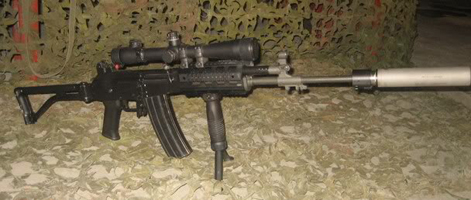Eurofighter
Moderadores: Glauber Prestes, Conselho de Moderação
- FCarvalho
- Sênior

- Mensagens: 36157
- Registrado em: Sex Mai 02, 2003 6:55 pm
- Localização: Manaus
- Agradeceram: 3130 vezes
Re: Eurofighter
Existe alguma obrigação legal para a Alemanha manter essas nukes em seu território ou que obrigue a Luftwaffe ter essa capacidade?
Caso o parlamento alemão resolva negar esse tipo de capacidade em solo alemão esta situação não poderia ser contornada de forma a dispensar que os caças tenham capacidade de ataque nuclear? Afinal, os franceses tem, e a USAFE obviamente também tem.
Faz tanta falta assim os caças alemães terem nukes que nem suas são?
abs
Caso o parlamento alemão resolva negar esse tipo de capacidade em solo alemão esta situação não poderia ser contornada de forma a dispensar que os caças tenham capacidade de ataque nuclear? Afinal, os franceses tem, e a USAFE obviamente também tem.
Faz tanta falta assim os caças alemães terem nukes que nem suas são?
abs
Um mal é um mal. Menor, maior, médio, tanto faz… As proporções são convencionadas e as fronteiras, imprecisas. Não sou um santo eremita e não pratiquei apenas o bem ao longo de minha vida. Mas, se me couber escolher entre dois males, prefiro abster-me por completo da escolha.
A. Sapkowski
A. Sapkowski
Re: Eurofighter
Não é questão de obrigação. É questão de vontade de cada país e compromisso com a OTAN. E dissuasão.FCarvalho escreveu: ↑Ter Abr 28, 2020 1:28 pm Existe alguma obrigação legal para a Alemanha manter essas nukes em seu território ou que obrigue a Luftwaffe ter essa capacidade?
Caso o parlamento alemão resolva negar esse tipo de capacidade em solo alemão esta situação não poderia ser contornada de forma a dispensar que os caças tenham capacidade de ataque nuclear? Afinal, os franceses tem, e a USAFE obviamente também tem.
Faz tanta falta assim os caças alemães terem nukes que nem suas são?
abs
Alguns aliados mais próximos dos EUA têm acesso a armas nucleares americanas, especialmente bombas B61: Bélgica, Alemanha, Itália, Holanda.
Essas bombas ficam estocadas em bases nesses países, sob controle dos EUA e podem ser utilizadas por suas Forças Aéreas, mas sob ordens dos EUA.
Isso acontece dentro do esquema da OTAN.
https://www.nato.int/cps/en/natohq/topics_50068.htmA number of NATO member countries contribute a dual-capable aircraft (DCA) capability to the Alliance. These aircraft are central to NATO’s nuclear deterrence mission and are available for nuclear roles at various levels of readiness. In their nuclear role, the aircraft are equipped to carry nuclear bombs in a conflict and personnel are trained accordingly.
The United States maintains absolute control and custody of their nuclear weapons forward deployed in Europe, while Allies provide military support for the DCA mission with conventional forces and capabilities.
Sempre e inevitavelmente, cada um de nós subestima o número de indivíduos estúpidos que circulam pelo mundo.
Carlo M. Cipolla
Carlo M. Cipolla
- FCarvalho
- Sênior

- Mensagens: 36157
- Registrado em: Sex Mai 02, 2003 6:55 pm
- Localização: Manaus
- Agradeceram: 3130 vezes
Re: Eurofighter
Uma situação bem esquisita em tempos de distensão nuclear.
E olha que manter nukes dos outros em seu território e não poder usar a critério deve ser algo bastante complicado para o governo explicar aos pagadores de impostos o porquê de manter nukes que não são suas em seu território, e assim, por tabela, se tornar um algo privilegiado para o "inimigo" russo.
Aliás, fazer dissuasão nuclear na casa dos outros é bem esperto de parte dos americanos.
Mesmo tendo dezenas de B-52 e B-1 espalhados por lá. Sem considerar os SSBN soltos por aí.
abs
E olha que manter nukes dos outros em seu território e não poder usar a critério deve ser algo bastante complicado para o governo explicar aos pagadores de impostos o porquê de manter nukes que não são suas em seu território, e assim, por tabela, se tornar um algo privilegiado para o "inimigo" russo.
Aliás, fazer dissuasão nuclear na casa dos outros é bem esperto de parte dos americanos.
Mesmo tendo dezenas de B-52 e B-1 espalhados por lá. Sem considerar os SSBN soltos por aí.
abs
Um mal é um mal. Menor, maior, médio, tanto faz… As proporções são convencionadas e as fronteiras, imprecisas. Não sou um santo eremita e não pratiquei apenas o bem ao longo de minha vida. Mas, se me couber escolher entre dois males, prefiro abster-me por completo da escolha.
A. Sapkowski
A. Sapkowski
Re: Eurofighter
FCarvalho escreveu: ↑Ter Abr 28, 2020 2:26 pm Uma situação bem esquisita em tempos de distensão nuclear.
E olha que manter nukes dos outros em seu território e não poder usar a critério deve ser algo bastante complicado para o governo explicar aos pagadores de impostos o porquê de manter nukes que não são suas em seu território, e assim, por tabela, se tornar um algo privilegiado para o "inimigo" russo.
Aliás, fazer dissuasão nuclear na casa dos outros é bem esperto de parte dos americanos.
Mesmo tendo dezenas de B-52 e B-1 espalhados por lá. Sem considerar os SSBN soltos por aí.
abs
Creio que as nukes na Turquia foram removidas recentemente devidos às instabilidades por lá.Six U.S. nuclear weapon facilities in five NATO countries: Belgium (10-20), Germany (10-20), Italy (60-70), Netherlands (10-20), and Turkey (60-70).
No final da Guerra Fria, havia mais de 130 B61 apenas na Alemanha. Hoje estima-se de 10 a 20. Houve uma distensão, mas manteve-se a capacidade.
A existência de múltiplos vetores (caças, bombardeiros, misseis, obuses, submarinos) torna a equação muito mais complicada. Envolve armas nucleares táticas e estratégicas. Essas B61 em caças são consideradas não estratégicas.
https://www.nti.org/analysis/articles/n ... sarmament/Non-strategic gravity bombs (B61-3, B61-4)
Delivery system: U.S. F-15 E, F16C/D, Belgian, Dutch, and Turkish F-16s, and German and Italian PA-200 Tornado
Sempre e inevitavelmente, cada um de nós subestima o número de indivíduos estúpidos que circulam pelo mundo.
Carlo M. Cipolla
Carlo M. Cipolla
- Frederico Vitor
- Sênior

- Mensagens: 2059
- Registrado em: Ter Ago 14, 2007 1:34 pm
- Localização: Goiás
- Agradeceram: 270 vezes
Re: Eurofighter
APRIL 9, 2020
Flying & fighting in the Eurofighter Typhoon: Interview with Raffael ‘Klax’ Klaschka
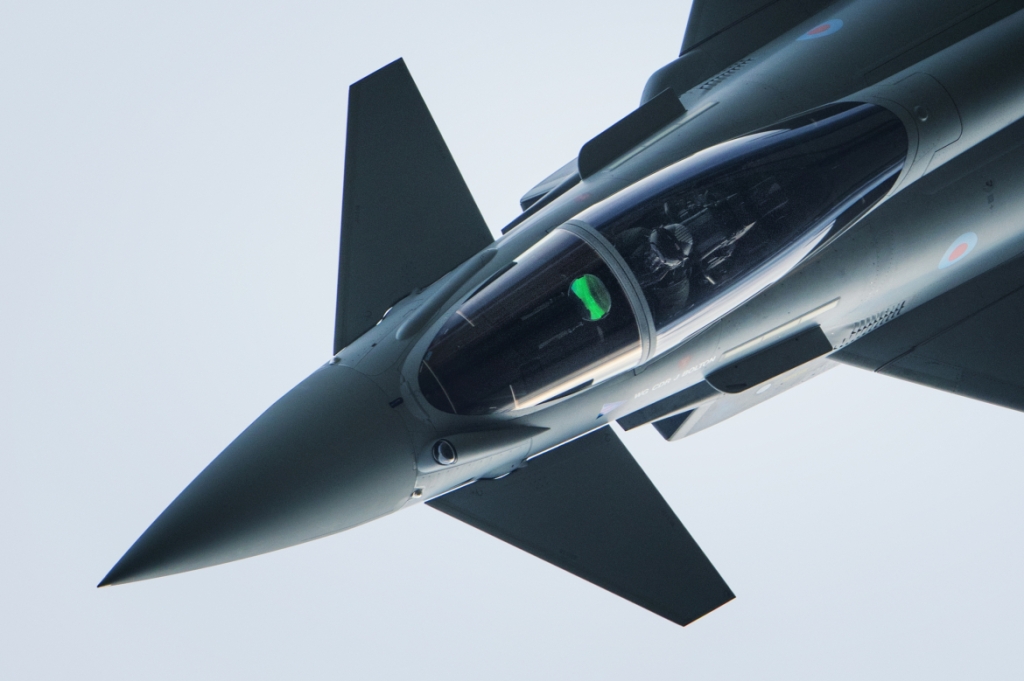
Fast, powerful and reliable, the Typhoon is the backbone of Europe’s air power. Outnumbering the US’ F-15C and F-22s combined, it is a large and potent force, set to grow larger with future German orders. We spoke to Raffael ‘Klax’ Klaschka – former German Air Force Phantom and Typhoon pilot – now Marketing Lead at Eurofighter GmbH, to find out more.
Which aircraft have you flown and with which units?
“After flying several training aircraft during my Military Pilot Training I was rated ‘Combat Ready’ on the mighty F-4F Phantom, the F/A-18 Hornet and, of course, Eurofighter Typhoon. My total of more than 2.500 flying hours were spread across a range of different units in Germany, in the US and in Spain.”
How do you feel about the aesthetics of the Typhoon?
“If looks could kill! Eurofighter is very easy on the eye. Personally, for visual appeal, I would rate it close to the F-4F. In ‘clean’ configuration Typhoon is a very slick aircraft, even more so when comparing the single-seater to the twin-seater.”
What were your first impressions of the Typhoon?
“I first saw Typhoon in action during an air show in the early 2000s. My first impression was all about the power. I thought, ‘Wow, this thing has some strong engines!’ Today, it still has the strongest in its class by far.”
Which three words best describe it?
“Effective. Proven. Trusted.”
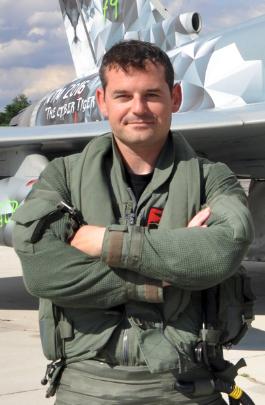
What is the best thing about it?
No one single attribute stands-out and that’s the remarkable thing about the aircraft. It strength lies in the sum of its parts. Power, operability, agility, adaptability, availability and reliability are all outstanding features. If pushed to pick one from a flyer’s point of view – then again; it is the energy. It has bags of it in all kinds of situations. The aircraft exudes confidence – and that filters directly through to the person flying it.”
And the worst thing?
“I’ve never met a pilot who wouldn’t change something about his or her aircraft – regardless of what they’re sitting in. From a fighter perspective Typhoon is very capable and is getting even more so incrementally through its life. The planned depth and breadth of capability is awesome and I’d like to see it implemented more quickly onto the jets across our front-line squadrons. It is happening – but like all fighter pilots, I want Christmas morning, every morning.”
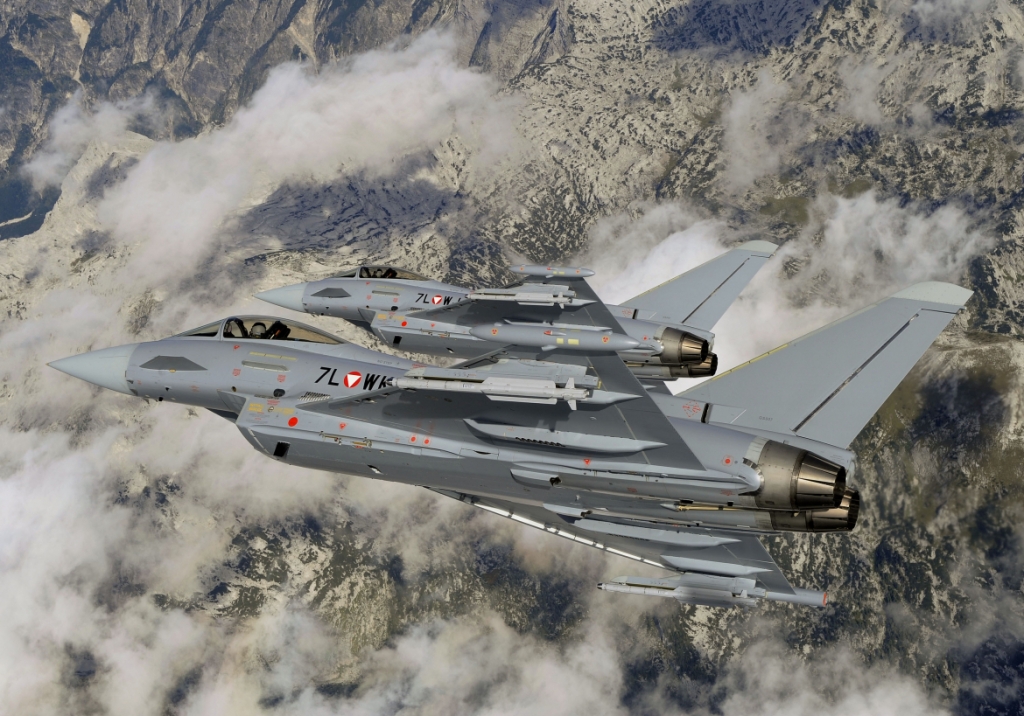
How you rate the Typhoon in the following categories? Inst turn, sust turn etc.
“To rate it accurately I would need some validated (rather than PR) comparison figures across the current air fighter domain. But to keep things ‘unclassified’ I can tell you that Typhoon outperforms most of the metal flying around out there in terms of power and acceleration. And with a huge dish (radar) and good power output, the aircraft’s outstanding sensor performance makes it a superior air-to-air fighter. That view is based not only on pure numbers from the flight manual, but also through my experience during exercises and mockup encounters against most of the current western fighters.”
Which aircraft have you flown DACT against with the Typhoon? Please describe each and the best way to ‘fight’ each opponent?
“The only way to effectively take on each opponent is to know what level of capability you’re up against. All the different types of fighter jets flying today has its own unique characteristics. Also key to solving the ‘success in combat’equation is the type of missiles you have on board and the type of cueing system being used. When it comes to a classical “guns only”-fight I would (and did) always trust on Typhoon’s huge excess power to maintain the offensive advantage. If engaged in a 1 or 2-circle fight? I can only offer the standard fighter pilot response: “It depends…’”
Which foreign air force impressed you the most?
“I was quite impressed in the past by the way the air forces of eastern European countries have operated and evolved. One good example is Poland, and there are many others.”
How confident would you feel going against a Su-57 and why?
“With only limited data about the Su-57, I would still say that a Typhoon with Meteor and E-SCAN will be a lethal opponent against any current asset out there. And we should’t forget the combat mass behind Typhoon. There are almost 500 aircraft alone flying across Europe. I understand that Su-57 was designed with F-22 as its key adversary. Given where we are today – I think Typhoon would perform impressively against either.”
And what about current Typhoon? As I understand E-scan is not operational. Are you counting Su-57 as a ‘current’ threat?
“From what we know about the Su-57, the current Typhoon would be up for the job, specially focussing on BVR capabilities where Typhoon sets the benchmark.”
How do the Hornet and Typhoon compare? According to one pilot, in DACT, the Hornet has the advantage up to 25K and the Typhoon above 25K – is this something you’d agree with?
“The Hornet can achieve very high AOA states. However that comes with tremendous energy bleed. To regain that energy, the Hornet would find itself at an immediate operational disadvantage. I know from experience that would be the case across all altitude bands. To its credit, the ‘nose authority’ during slow speed engagement is quite good on the Hornet. In essence, Hornet would only ever be anything like a challenge for Typhoon during a very slow fight. Typhoon doesn’t do ‘very slow’. So that is not a situation in which any Typhoon pilot I know would purposefully try to place him/herself.”
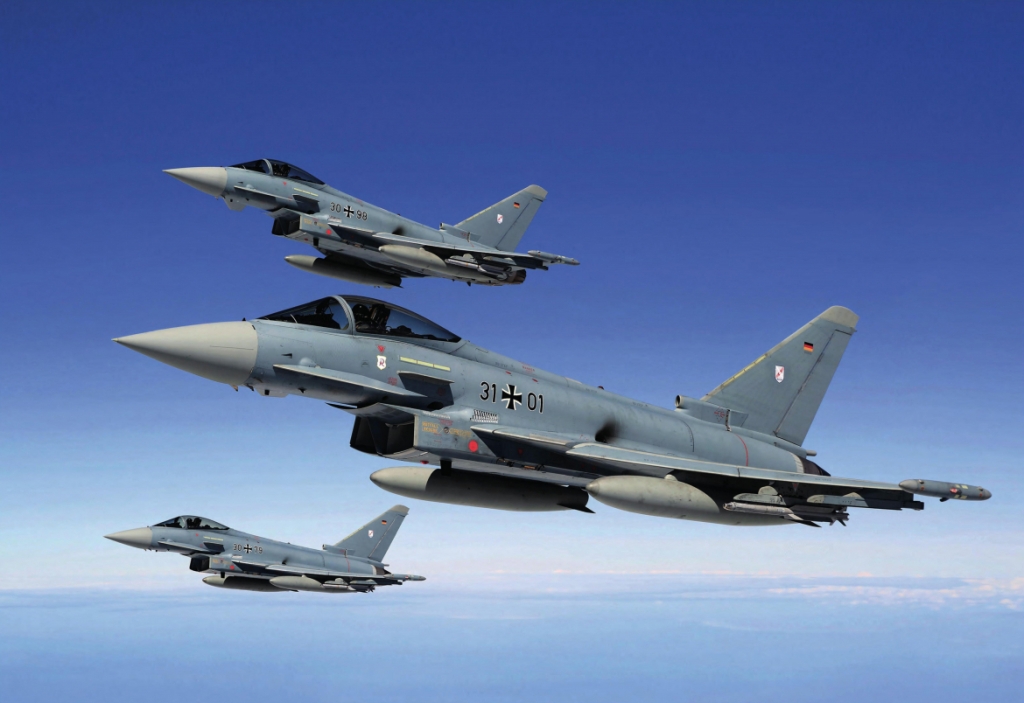
Would a Typhoon with AMRAAM AIM-120D stand a chance against a Typhoon with Meteor, all other parameters being equal? How significant a step forward is Meteor? Is it equal to long range Chinese missiles?
Meteor opens up a new world of BVR fight. I’d wager that Typhoon with Meteor has the combat edge over any potential foe it may come across in today’s skies.
Do you personally prefer IRIS-T or ASRAAM, and what are the reason for your choice?
“I have experience on IRIS-T on the Hornet and on Typhoon. And that was convincing. My British pilot colleagues are also quite happy with ASRAAM. So no clear choice or favour; both work great. ”
Storm Shadow is a large weapon for an aircraft primarily designed to carry air-to-air missiles, was this a challenging integration?
“Most integration programmes present their own unique challenges. What we do know is that Storm Shadow is well-established and operational across a number of air forces.”

Before I go back to the interview with Klax I feel I should explain a little background detail about the AMK. Typhoon’s supersonic agility is very impressive, but its current angle-of-attack (AoA) limits at lower speeds are less impressive; a Cassidian (Airbus Defence & Space) led effort demonstrated in 2014 would remedy this. The ‘Aerodynamic Mod Kit’ (AMK) includes re-shaped strakes, leading edge root extensions, and extended trailing edge flaperons. The AMK aims to deliver increases to the maximum wing lift, the AoA limit and the roll rates at High AoA. The strakes will generate vortices that will maintain a controlled airflow over the wing surface even at high angles of attack. When I spoke to EADS test pilot Chris Worning for an article in Aerospace he noted “The first stage was to proof the concept. Do some measurements to see if the strakes did what we thought they would do. And that went very well, the predictions were close. We will fly the Aerodynamic Modification Kit next. We have a mod kit and we’re hopefully going to fly it here this summer (at Manching). This is basically what you could put on a series production aeroplane.”
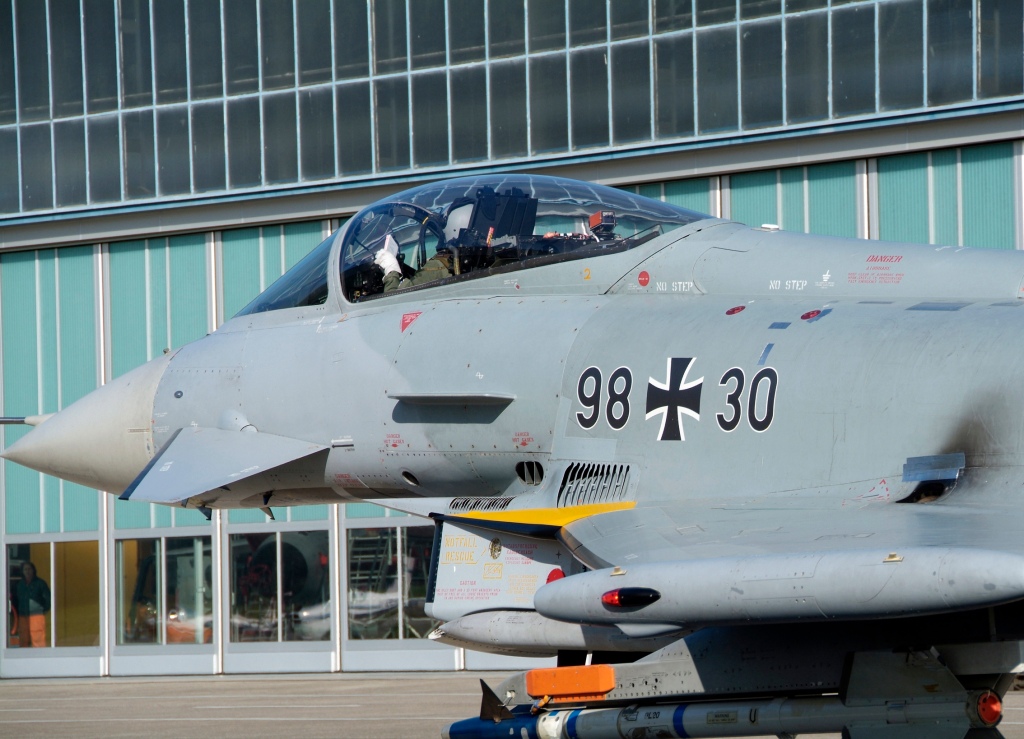
On the advantages he noted, “First of all they will give us a bit more angle of attack. The maximum angle of attack of the aeroplane increases, which is obviously helpful in close-in combat, if applied intelligently. The second thing they do is increase the manoeuvrability of the aircraft at high angles of attack. So at a given angle of attack, you have for instance, much higher roll rates: so the overall agility of the aircraft increases.”
The Typhoon’s current AoA limit is slightly more than twenty four degrees, approximately the same as an F-16. The new changes are expected to increase the limit to at least 34 degrees which will give pilots in combat a many more possibilities for nose-pointing. Worning was keen to point out that flying at high AoA in combat must be applied intelligently “You have to remember when you have a very AoA there is also a disadvantage: you’re creating an awful lot of drag. But it does give you extra capability if you combine it with wisdom and practice. It’s nice to have the option. The strake is primarily designed for subsonic use and subsonic combat. It will not change the aircraft in the supersonic regime, but there’s not much you can improve there to be honest. It won’t cost us anything. It’s a small aerodynamic surfaces, they weigh a few kilos. There won’t be any disadvantages at all.”

Worning admitted that currently the Rafale has a slightly higher maximum AoA than the Typhoon, but is confident that the new aerodynamic changes will at least equal, and probably surpass the higher figure of the French rival; he also noted that Typhoon will match it while retaining a lot more engine power.
According to Worning the customer interest in AMK, which will probably cost less than one million Euros per aircraft, is increasing: “Looking in to the future and with emerging threats, people are saying we have to optimise what you can do in close-in combat. There’s was a school of thought a few years ago, that everything was going to happen at beyond visual range: nowadays we have new radars and missile for the BVR mission, but you have to look at all parts of the envelope, and this is increasing the manoeuvrability at the lower end. This is something the Luftwaffe and the Royal Air Force are interested in… As I have said, when you enter this go into the very high AoA, you are now entering into an area where the drag really increases, you must apply that capability with brains: you don’t need to be careful- you won’t crash, but you might lose the dogfight, because you reduce your engine. People primarily need the high AoA to ‘point’, but one way you can point a missile with this aircraft is with the helmet (instead of with the whole aircraft). As we have the helmet-mounted sight it’s not that bad, but fighter pilots want everything. Short of those that have TVC and use post-stall manoeuvring we will be able to cope with all of those threat.”
Now back to Klax:
Would AMK help Storm Shadow use, was this a reason for the AMK development?
“The available weapon load on Typhoon allows for a lot of operational flexibility for its air-to-surface configurations, whilst retaining air-to-air capability with special designated stations for those weapons. That’s about all I can say on that matter.”
AMK – Huge manoeuvrability increases were described, why has no film been released to demonstrate these abilities?
“I think it’s a game-changer as part of Typhoon’s continued capability development.. In my Eurofighter role, I’ll certainly get that message out in the future.”
On the subject of the AMK, why have no operators gone for it?
“AMK expands the flight envelope of Typhoon and allows for more asymmetric configurations with more flexible release sequences. Also it eases the process of integrating new weapons. It is clearly an enabler for more operational flexibility. Operators are looking-on and seeing the benefits already.”
Digital stealth. What is ‘digital stealth’?
“Digital Stealth means using all other means besides the physical shape of the aircraft to deny enemy systems high fidelity of geographic position and signature. Counter-stealth technology is eroding the advantages of low observability. Agile digital stealth capability will ensure survivability in future complex, congested and contested threat environments.”
Can you explain this further?
“There are two main elements to being able to act stealthily: being aware of your environment and being hard to observe. The Typhoon’s electronic warfare suite covers both. Firstly, the system provides full awareness of surrounding threats so the pilot knows where they are and what modes they’re using. This picture is enhanced further by pulling in data from other operators in the theatre, networking via the Typhoon’s EW system. With an up-to-the-moment, accurate and comprehensive picture of the environment, a Typhoon pilot can make sure they don’t even come within range of potentially-dangerous radar.

However, staying away from threats isn’t always possible, so the second core element of stealth is to make yourself hard to see. Here, the Typhoon EW suite employs a range of electronic countermeasures that allows the aircraft to digitally hide its signature, becoming invisible to radar, or to digitally create a complex and confusing picture (noise) for a threat operator, denying them a clean targeting opportunity and preventing them from launching a missile in the first place. Digital Means Adaptable
Importantly, the Typhoon’s advanced, reprogrammable EW suite allows the aircraft to react to a constantly-changing threat environment in ways that physical stealth cannot.
Consider today’s threats. The latest surface-to-air missile systems are having their hardware regularly upgraded, are being networked and can change their behaviour almost instantaneously via software-reprogramming. In short, they are constantly evolving, creating a dynamic and challenging threat environment. This means that the advantage of aircraft which use traditional physical stealth technology, which is designed to make the aircraft hard-to-observe by threat radar systems, is eroding. Counter-stealth techniques are on the rise and have been successfully employed as far back as 1993.
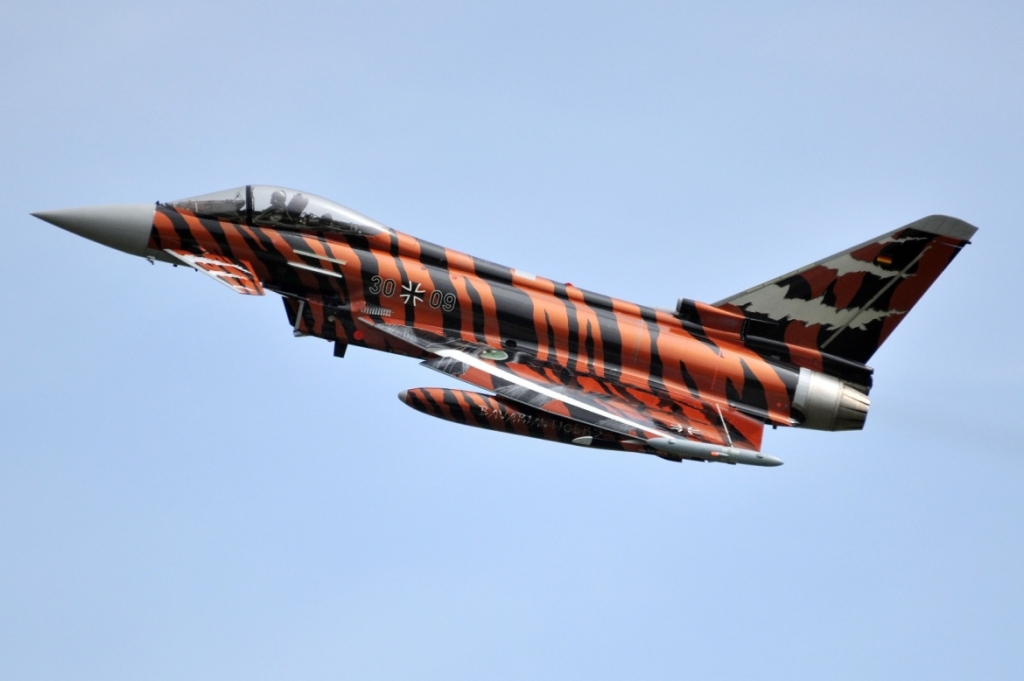
This vulnerability against high-end threats with counter-stealth techniques is difficult to address because the basic elements of physical stealth (an aircraft’s skin & surface treatments, internal structure, and configuration) cannot easily be changed. However, in contrast, the Typhoon’s EW systems, which are readily re-programmable, can evolve digitally to maintain the aircraft’s combat advantage even as threats change around it.
The secret to this advantage is ‘mission data’, a term which sounds relatively benign but is critical to an aircraft’s EW performance and often life-saving. Mission data is the threat intelligence that allows the Typhoon’s sensors to recognise a threat and use the appropriate electronic countermeasure or evasion technique to keep the Typhoon safely out of harm’s way. For some aircraft, mission data is controlled by foreign nations or platform manufacturers, meaning that updates can be months, even years apart. With Typhoon, which has an open, reprogrammable system which can be updated by the operator, a new threat which is reported as ‘unknown’ during today’s mission can be programmed into the system in hours, meaning that the threat will be identified and dealt with during the very next mission.”
Continua....
Flying & fighting in the Eurofighter Typhoon: Interview with Raffael ‘Klax’ Klaschka

Fast, powerful and reliable, the Typhoon is the backbone of Europe’s air power. Outnumbering the US’ F-15C and F-22s combined, it is a large and potent force, set to grow larger with future German orders. We spoke to Raffael ‘Klax’ Klaschka – former German Air Force Phantom and Typhoon pilot – now Marketing Lead at Eurofighter GmbH, to find out more.
Which aircraft have you flown and with which units?
“After flying several training aircraft during my Military Pilot Training I was rated ‘Combat Ready’ on the mighty F-4F Phantom, the F/A-18 Hornet and, of course, Eurofighter Typhoon. My total of more than 2.500 flying hours were spread across a range of different units in Germany, in the US and in Spain.”
How do you feel about the aesthetics of the Typhoon?
“If looks could kill! Eurofighter is very easy on the eye. Personally, for visual appeal, I would rate it close to the F-4F. In ‘clean’ configuration Typhoon is a very slick aircraft, even more so when comparing the single-seater to the twin-seater.”
What were your first impressions of the Typhoon?
“I first saw Typhoon in action during an air show in the early 2000s. My first impression was all about the power. I thought, ‘Wow, this thing has some strong engines!’ Today, it still has the strongest in its class by far.”
Which three words best describe it?
“Effective. Proven. Trusted.”

What is the best thing about it?
No one single attribute stands-out and that’s the remarkable thing about the aircraft. It strength lies in the sum of its parts. Power, operability, agility, adaptability, availability and reliability are all outstanding features. If pushed to pick one from a flyer’s point of view – then again; it is the energy. It has bags of it in all kinds of situations. The aircraft exudes confidence – and that filters directly through to the person flying it.”
And the worst thing?
“I’ve never met a pilot who wouldn’t change something about his or her aircraft – regardless of what they’re sitting in. From a fighter perspective Typhoon is very capable and is getting even more so incrementally through its life. The planned depth and breadth of capability is awesome and I’d like to see it implemented more quickly onto the jets across our front-line squadrons. It is happening – but like all fighter pilots, I want Christmas morning, every morning.”

How you rate the Typhoon in the following categories? Inst turn, sust turn etc.
“To rate it accurately I would need some validated (rather than PR) comparison figures across the current air fighter domain. But to keep things ‘unclassified’ I can tell you that Typhoon outperforms most of the metal flying around out there in terms of power and acceleration. And with a huge dish (radar) and good power output, the aircraft’s outstanding sensor performance makes it a superior air-to-air fighter. That view is based not only on pure numbers from the flight manual, but also through my experience during exercises and mockup encounters against most of the current western fighters.”
Which aircraft have you flown DACT against with the Typhoon? Please describe each and the best way to ‘fight’ each opponent?
“The only way to effectively take on each opponent is to know what level of capability you’re up against. All the different types of fighter jets flying today has its own unique characteristics. Also key to solving the ‘success in combat’equation is the type of missiles you have on board and the type of cueing system being used. When it comes to a classical “guns only”-fight I would (and did) always trust on Typhoon’s huge excess power to maintain the offensive advantage. If engaged in a 1 or 2-circle fight? I can only offer the standard fighter pilot response: “It depends…’”
Which foreign air force impressed you the most?
“I was quite impressed in the past by the way the air forces of eastern European countries have operated and evolved. One good example is Poland, and there are many others.”
How confident would you feel going against a Su-57 and why?
“With only limited data about the Su-57, I would still say that a Typhoon with Meteor and E-SCAN will be a lethal opponent against any current asset out there. And we should’t forget the combat mass behind Typhoon. There are almost 500 aircraft alone flying across Europe. I understand that Su-57 was designed with F-22 as its key adversary. Given where we are today – I think Typhoon would perform impressively against either.”
And what about current Typhoon? As I understand E-scan is not operational. Are you counting Su-57 as a ‘current’ threat?
“From what we know about the Su-57, the current Typhoon would be up for the job, specially focussing on BVR capabilities where Typhoon sets the benchmark.”
How do the Hornet and Typhoon compare? According to one pilot, in DACT, the Hornet has the advantage up to 25K and the Typhoon above 25K – is this something you’d agree with?
“The Hornet can achieve very high AOA states. However that comes with tremendous energy bleed. To regain that energy, the Hornet would find itself at an immediate operational disadvantage. I know from experience that would be the case across all altitude bands. To its credit, the ‘nose authority’ during slow speed engagement is quite good on the Hornet. In essence, Hornet would only ever be anything like a challenge for Typhoon during a very slow fight. Typhoon doesn’t do ‘very slow’. So that is not a situation in which any Typhoon pilot I know would purposefully try to place him/herself.”

Would a Typhoon with AMRAAM AIM-120D stand a chance against a Typhoon with Meteor, all other parameters being equal? How significant a step forward is Meteor? Is it equal to long range Chinese missiles?
Meteor opens up a new world of BVR fight. I’d wager that Typhoon with Meteor has the combat edge over any potential foe it may come across in today’s skies.
Do you personally prefer IRIS-T or ASRAAM, and what are the reason for your choice?
“I have experience on IRIS-T on the Hornet and on Typhoon. And that was convincing. My British pilot colleagues are also quite happy with ASRAAM. So no clear choice or favour; both work great. ”
Storm Shadow is a large weapon for an aircraft primarily designed to carry air-to-air missiles, was this a challenging integration?
“Most integration programmes present their own unique challenges. What we do know is that Storm Shadow is well-established and operational across a number of air forces.”

Before I go back to the interview with Klax I feel I should explain a little background detail about the AMK. Typhoon’s supersonic agility is very impressive, but its current angle-of-attack (AoA) limits at lower speeds are less impressive; a Cassidian (Airbus Defence & Space) led effort demonstrated in 2014 would remedy this. The ‘Aerodynamic Mod Kit’ (AMK) includes re-shaped strakes, leading edge root extensions, and extended trailing edge flaperons. The AMK aims to deliver increases to the maximum wing lift, the AoA limit and the roll rates at High AoA. The strakes will generate vortices that will maintain a controlled airflow over the wing surface even at high angles of attack. When I spoke to EADS test pilot Chris Worning for an article in Aerospace he noted “The first stage was to proof the concept. Do some measurements to see if the strakes did what we thought they would do. And that went very well, the predictions were close. We will fly the Aerodynamic Modification Kit next. We have a mod kit and we’re hopefully going to fly it here this summer (at Manching). This is basically what you could put on a series production aeroplane.”

On the advantages he noted, “First of all they will give us a bit more angle of attack. The maximum angle of attack of the aeroplane increases, which is obviously helpful in close-in combat, if applied intelligently. The second thing they do is increase the manoeuvrability of the aircraft at high angles of attack. So at a given angle of attack, you have for instance, much higher roll rates: so the overall agility of the aircraft increases.”
The Typhoon’s current AoA limit is slightly more than twenty four degrees, approximately the same as an F-16. The new changes are expected to increase the limit to at least 34 degrees which will give pilots in combat a many more possibilities for nose-pointing. Worning was keen to point out that flying at high AoA in combat must be applied intelligently “You have to remember when you have a very AoA there is also a disadvantage: you’re creating an awful lot of drag. But it does give you extra capability if you combine it with wisdom and practice. It’s nice to have the option. The strake is primarily designed for subsonic use and subsonic combat. It will not change the aircraft in the supersonic regime, but there’s not much you can improve there to be honest. It won’t cost us anything. It’s a small aerodynamic surfaces, they weigh a few kilos. There won’t be any disadvantages at all.”

Worning admitted that currently the Rafale has a slightly higher maximum AoA than the Typhoon, but is confident that the new aerodynamic changes will at least equal, and probably surpass the higher figure of the French rival; he also noted that Typhoon will match it while retaining a lot more engine power.
According to Worning the customer interest in AMK, which will probably cost less than one million Euros per aircraft, is increasing: “Looking in to the future and with emerging threats, people are saying we have to optimise what you can do in close-in combat. There’s was a school of thought a few years ago, that everything was going to happen at beyond visual range: nowadays we have new radars and missile for the BVR mission, but you have to look at all parts of the envelope, and this is increasing the manoeuvrability at the lower end. This is something the Luftwaffe and the Royal Air Force are interested in… As I have said, when you enter this go into the very high AoA, you are now entering into an area where the drag really increases, you must apply that capability with brains: you don’t need to be careful- you won’t crash, but you might lose the dogfight, because you reduce your engine. People primarily need the high AoA to ‘point’, but one way you can point a missile with this aircraft is with the helmet (instead of with the whole aircraft). As we have the helmet-mounted sight it’s not that bad, but fighter pilots want everything. Short of those that have TVC and use post-stall manoeuvring we will be able to cope with all of those threat.”
Now back to Klax:
Would AMK help Storm Shadow use, was this a reason for the AMK development?
“The available weapon load on Typhoon allows for a lot of operational flexibility for its air-to-surface configurations, whilst retaining air-to-air capability with special designated stations for those weapons. That’s about all I can say on that matter.”
AMK – Huge manoeuvrability increases were described, why has no film been released to demonstrate these abilities?
“I think it’s a game-changer as part of Typhoon’s continued capability development.. In my Eurofighter role, I’ll certainly get that message out in the future.”
On the subject of the AMK, why have no operators gone for it?
“AMK expands the flight envelope of Typhoon and allows for more asymmetric configurations with more flexible release sequences. Also it eases the process of integrating new weapons. It is clearly an enabler for more operational flexibility. Operators are looking-on and seeing the benefits already.”
Digital stealth. What is ‘digital stealth’?
“Digital Stealth means using all other means besides the physical shape of the aircraft to deny enemy systems high fidelity of geographic position and signature. Counter-stealth technology is eroding the advantages of low observability. Agile digital stealth capability will ensure survivability in future complex, congested and contested threat environments.”
Can you explain this further?
“There are two main elements to being able to act stealthily: being aware of your environment and being hard to observe. The Typhoon’s electronic warfare suite covers both. Firstly, the system provides full awareness of surrounding threats so the pilot knows where they are and what modes they’re using. This picture is enhanced further by pulling in data from other operators in the theatre, networking via the Typhoon’s EW system. With an up-to-the-moment, accurate and comprehensive picture of the environment, a Typhoon pilot can make sure they don’t even come within range of potentially-dangerous radar.

However, staying away from threats isn’t always possible, so the second core element of stealth is to make yourself hard to see. Here, the Typhoon EW suite employs a range of electronic countermeasures that allows the aircraft to digitally hide its signature, becoming invisible to radar, or to digitally create a complex and confusing picture (noise) for a threat operator, denying them a clean targeting opportunity and preventing them from launching a missile in the first place. Digital Means Adaptable
Importantly, the Typhoon’s advanced, reprogrammable EW suite allows the aircraft to react to a constantly-changing threat environment in ways that physical stealth cannot.
Consider today’s threats. The latest surface-to-air missile systems are having their hardware regularly upgraded, are being networked and can change their behaviour almost instantaneously via software-reprogramming. In short, they are constantly evolving, creating a dynamic and challenging threat environment. This means that the advantage of aircraft which use traditional physical stealth technology, which is designed to make the aircraft hard-to-observe by threat radar systems, is eroding. Counter-stealth techniques are on the rise and have been successfully employed as far back as 1993.

This vulnerability against high-end threats with counter-stealth techniques is difficult to address because the basic elements of physical stealth (an aircraft’s skin & surface treatments, internal structure, and configuration) cannot easily be changed. However, in contrast, the Typhoon’s EW systems, which are readily re-programmable, can evolve digitally to maintain the aircraft’s combat advantage even as threats change around it.
The secret to this advantage is ‘mission data’, a term which sounds relatively benign but is critical to an aircraft’s EW performance and often life-saving. Mission data is the threat intelligence that allows the Typhoon’s sensors to recognise a threat and use the appropriate electronic countermeasure or evasion technique to keep the Typhoon safely out of harm’s way. For some aircraft, mission data is controlled by foreign nations or platform manufacturers, meaning that updates can be months, even years apart. With Typhoon, which has an open, reprogrammable system which can be updated by the operator, a new threat which is reported as ‘unknown’ during today’s mission can be programmed into the system in hours, meaning that the threat will be identified and dealt with during the very next mission.”
Continua....
- Frederico Vitor
- Sênior

- Mensagens: 2059
- Registrado em: Ter Ago 14, 2007 1:34 pm
- Localização: Goiás
- Agradeceram: 270 vezes
Re: Eurofighter
This vulnerability against high-end threats with counter-stealth techniques is difficult to address because the basic elements of physical stealth (an aircraft’s skin & surface treatments, internal structure, and configuration) cannot easily be changed. However, in contrast, the Typhoon’s EW systems, which are readily re-programmable, can evolve digitally to maintain the aircraft’s combat advantage even as threats change around it.
The secret to this advantage is ‘mission data’, a term which sounds relatively benign but is critical to an aircraft’s EW performance and often life-saving. Mission data is the threat intelligence that allows the Typhoon’s sensors to recognise a threat and use the appropriate electronic countermeasure or evasion technique to keep the Typhoon safely out of harm’s way. For some aircraft, mission data is controlled by foreign nations or platform manufacturers, meaning that updates can be months, even years apart. With Typhoon, which has an open, reprogrammable system which can be updated by the operator, a new threat which is reported as ‘unknown’ during today’s mission can be programmed into the system in hours, meaning that the threat will be identified and dealt with during the very next mission.”

Typhoon has a central column, how does this compare with a sidestick?
“My experience with sidestick airplanes is based on several rides in the F-16. I felt it was just a different concept when compared, but in the end both work absolutely fine.”
Does Typhoon have a ‘unique selling point’ not offered by potential rivals?
“Two words; ‘Europe’. It has European industrial collaboration in its DNA. Next: ‘Sovereignty’. It gives users total control over MSN Data.”
Typhoon has been described as having an unsurpassed climb rate. Is there any likelihood of an official record attempt?
“We’re too busy protecting air space and borders to chase fast cars and clouds. There’s nothing to prove here. For climb-rate, it’s a world beater in its class.”
Tell me something I don’t know about Typhoon…
“It will likely remain in service with many air forces way beyond 2050. When it eventually leaves service, it will be the best fighter it can ever be and still taking care of business.”
How does the Typhoon community generally feel about the F-35?
“Working alongside the F-35 will be the reality of the next decades to come. There are some areas where Typhoon is the benchmark. Exploiting those areas and adding them to the overall capability mix alongside the F-35 will result in quite a lethal fighting force.”
What is the biggest myth about the Typhoon?
“Cost. It can be more cost-effective to own, maintain and operate than pretty much anything else in its class. The comparison data is in the public domain if
you look in the right places.”
Where?
“The data is out there in the public domain. No further comment from Klax here.”
What should I have asked you?
“What is like to wear a business suit instead of a flying suit? But that’s a whole new interview.”
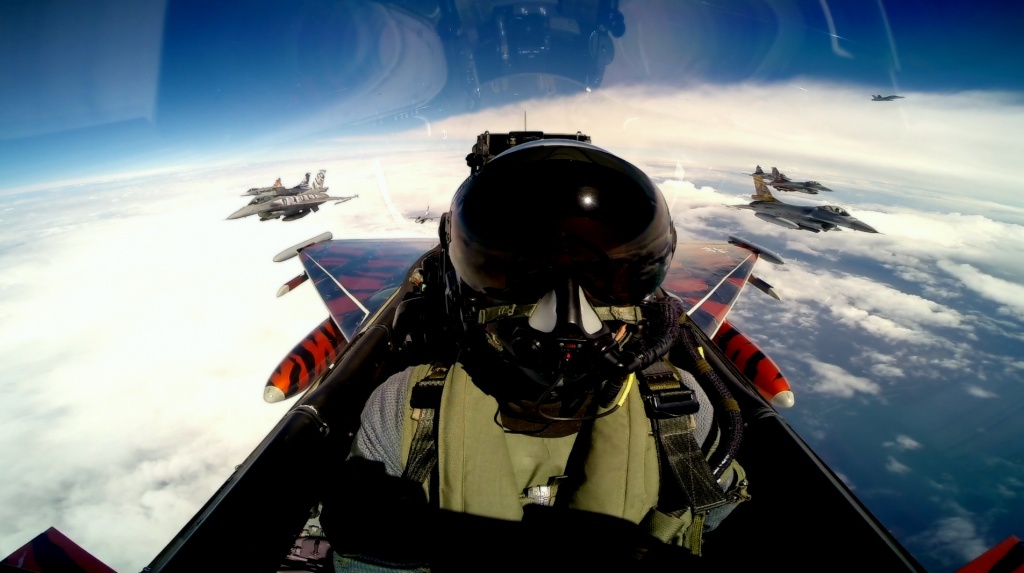
 https://hushkit.net/2020/04/09/flying-f ... -klaschka/
https://hushkit.net/2020/04/09/flying-f ... -klaschka/
The secret to this advantage is ‘mission data’, a term which sounds relatively benign but is critical to an aircraft’s EW performance and often life-saving. Mission data is the threat intelligence that allows the Typhoon’s sensors to recognise a threat and use the appropriate electronic countermeasure or evasion technique to keep the Typhoon safely out of harm’s way. For some aircraft, mission data is controlled by foreign nations or platform manufacturers, meaning that updates can be months, even years apart. With Typhoon, which has an open, reprogrammable system which can be updated by the operator, a new threat which is reported as ‘unknown’ during today’s mission can be programmed into the system in hours, meaning that the threat will be identified and dealt with during the very next mission.”

Typhoon has a central column, how does this compare with a sidestick?
“My experience with sidestick airplanes is based on several rides in the F-16. I felt it was just a different concept when compared, but in the end both work absolutely fine.”
Does Typhoon have a ‘unique selling point’ not offered by potential rivals?
“Two words; ‘Europe’. It has European industrial collaboration in its DNA. Next: ‘Sovereignty’. It gives users total control over MSN Data.”
Typhoon has been described as having an unsurpassed climb rate. Is there any likelihood of an official record attempt?
“We’re too busy protecting air space and borders to chase fast cars and clouds. There’s nothing to prove here. For climb-rate, it’s a world beater in its class.”
Tell me something I don’t know about Typhoon…
“It will likely remain in service with many air forces way beyond 2050. When it eventually leaves service, it will be the best fighter it can ever be and still taking care of business.”
How does the Typhoon community generally feel about the F-35?
“Working alongside the F-35 will be the reality of the next decades to come. There are some areas where Typhoon is the benchmark. Exploiting those areas and adding them to the overall capability mix alongside the F-35 will result in quite a lethal fighting force.”
What is the biggest myth about the Typhoon?
“Cost. It can be more cost-effective to own, maintain and operate than pretty much anything else in its class. The comparison data is in the public domain if
you look in the right places.”
Where?
“The data is out there in the public domain. No further comment from Klax here.”
What should I have asked you?
“What is like to wear a business suit instead of a flying suit? But that’s a whole new interview.”

- old
- Sênior

- Mensagens: 1478
- Registrado em: Seg Nov 14, 2005 7:55 am
- Localização: Barcelona, Spain.
- Agradeceram: 34 vezes
Re: Eurofighter
Nuevos radares para el EF/2000
Alemania y España firman una acuerdo para producir 130 radares Aesa de última generación
https://www.defense-aerospace.com/cgi-b ... 2264&cat=5
Alemania y España firman una acuerdo para producir 130 radares Aesa de última generación
https://www.defense-aerospace.com/cgi-b ... 2264&cat=5
Re: Eurofighter
As coisas nas Europa não são fáceis...
Eurofighter AESA Radar Program Splits into Three
(Source: Defense-Aerospace.com; posted July 02, 2020)
By Giovanni de Briganti
Three different electronic scanning radars are now being developed for Eurofighter, with Qatar, Kuwait and possibly Saudi Arabia using the original Captor-E, Germany and Spain developing the ECRS Mk 1 while Italy and the UK may develop the ECRS Mk 2. (EF photo)
PARIS --- The €1.5 billion contract recently awarded to Germany’s Hensoldt for the development and production of a new AESA radar for Eurofighter is a direct consequence of the 2018 break-up of the original Euroradar project into three separate programs.
Instead of pursuing the original Captor-E radar that will be fitted to the Eurofighters delivered to Kuwait and Qatar (as well as the next batch of Typhoons for Saudi Arabia, if it enters production), the four partner nations separated into two groups because of differing operational requirements.
Germany and Spain decided to jointly fund the development and retrofit of a new radar, provisionally dubbed E-Scan Common Radar System (ECRS) Mk. 1, for their own Eurofighters because their operational requirements differ from those of Italy and the United Kingdom, the other two partners in the Eurofighter consortium.
Captor-E design refresh
Another reason is that the technology of the basic Captor-E is now over a decade old, and so requires modernization, a spokesman for Hensoldt said July 1. The resulting ECRS Mk 1 radar will be jointly developed by German systems house Hensoldt and its Spanish partner Indra, and is the object of the €1.5 billion contract announced July 1.
In parallel, Italy and the UK are teamed on a separate project, dubbed ECRS Mk. 2, managed by Leonardo Italy and Leonardo UK, although there has been no indication of any government funding for this effort. Both Italy and the UK operate Lockheed F-35 aircraft alongside their Eurofighters, and neither has yet announced plans to retrofit the latter with AESA radars.
Both the Mk 1 program and the Mk 2 project are derived from the original Captor-E electronically scanned digital antenna array radar developed under a November 2014 contract awarded by the NATO Eurofighter and Tornado Management Agency (NETMA) to the Eurofighter consortium. The Captor-E prototype antenna first flew in May 2007 on Eurofighter Development Aircraft 5, but it took seven years for the full-scale development contract to be awarded.
Confusion allows marketing license
While a certain confusion is maintained by the use of different names, the fact is that there are now three different AESA radars for Eurofighter, albeit all derived from the same Captor mechanically-scanned radar (originally called ECR-90) fitted to all Eurofighters.
The German Ministry of Defence announced June 8 that the “Bundeswehr is authorized to conclude four contracts with a total volume of around 2.8 billion euros for new radar technology for the Eurofighter.”
The statement added that these funds will pay to pay for the procurement of “the most modern AESA electronically-scanned radars, including multi-channel receivers to exploit the performance potential of this future-oriented technology, are to be developed and integrated into the Eurofighter.”
“The procurement of the already developed radar hardware should run parallel to the development of the final software. In the middle of the 2020s, the new radar system should then be available with full capabilities,” German MoD said.
The resulting ECRS Mk 1 radar “will then have improved detection and identification options with higher immunity to interference… an important contribution to the capabilities and survivability of the Eurofighter.”
Convoluted contract arrangements
The contractual arrangements are also somewhat confusing, and added to the use of multiple names allow participants considerable latitude to claim involvement in the EASA radar program.
“Due to the special construction of the Eurofighter consortium, NETMA signed the contract with Eurofighter GmbH, which forwarded the contract to Airbus Defense and Space, and Airbus signed,” an Airbus spokesman said July 2.
“Hensoldt and Indra have closed a cooperation agreement to jointly develop and produce the ECRS Mk 1 in a consortium. The subcontract went from Airbus to Hensoldt as the consortium lead, with a significant portion passed on directly to Indra,” which is not a subcontractor but a full partner, the Hensoldt spokesman said.
The original contract for 115 E-SCAN radars was announced by Airbus on June 25. This work was then subcontracted by Airbus to Hensoldt, the leader of a separate consortium with Spain’s Indra.
Eurofighter GmbH, the industry consortium which is nominally the program’s main contractor, announced July 1 having signed the ESCAN radar contract with NETMA. In its press release, company CEO Herman Claesen said “we are again demonstrating our collective commitment towards the continued development of Eurofighter Typhoon operational capability,” which is clearly not the case as only Germany and Spain are buying AESA radars.
Furthermore, although it’s eager to jump onto the bandwagon, Eurofighter GmbH's role is limited to managing the relationship between the four Eurofighter Core nations.
Technology improvements
Hensoldt says the just-awarded ECRS Mk 1 contracts cover a new German-Spanish development of new core components – including a digital multi-channel receiver and transmitter/receiver antenna modules – which a company spokesman says “will make the Eurofighter much more capable of meeting future threats over the coming decades.”
“This means that pilots in the Eurofighter will be better able to detect and engage air-to-air and air-to-ground targets. Several targets will be can be tracked and engaged simultaneously and independently of one another,” the German Ministry of Defence said June 8.
Hensoldt’s contracts include equipping about 130 Eurofighter aircraft of Tranches two and three. The development is being carried out by a Spanish-German industrial consortium under German leadership with the support of the Eurofighter nations Great Britain and Italy, the company said in its July 1 press release.
The difference between the 115 radars mentioned by Airbus and the 130 mentioned by Helsoldt is due to a change in the timing of the Spanish procurement. Spain has up to now ordered the first five Mk 1 radars, and plans to order another 17 in 2021, for a total of 22, an Airbus spokesman said July 2.
This will be an essential upgrade for the German and Spanish Eurofighters, which are still fitted with the original Captor radar that is now nearly 30 years old.
Sempre e inevitavelmente, cada um de nós subestima o número de indivíduos estúpidos que circulam pelo mundo.
Carlo M. Cipolla
Carlo M. Cipolla
- Viktor Reznov
- Sênior

- Mensagens: 6733
- Registrado em: Sex Jan 15, 2010 2:02 pm
- Agradeceram: 761 vezes
Re: Eurofighter
Caramba, que salada tá virando essa novela do radar AESA no Eurofighter, historicamente eu chuto que RAF vai começar a operar primeiro e a Luftwaffe vai peidar na farofa de última hora e continuar desatualizada pra que a Merkel tenha mais recursos pro projeto dela extinção do povo alemão.
I know the weakness, I know the pain. I know the fear you do not name. And the one who comes to find me when my time is through. I know you, yeah I know you.
- cabeça de martelo
- Sênior

- Mensagens: 37829
- Registrado em: Sex Out 21, 2005 10:45 am
- Localização: Portugal
- Agradeceram: 2602 vezes
Re: Eurofighter
A Alemanha está em pleno processo de aquisição de mais EFA2000 e o seu radar está a ser feito em conjunto com os Espanhóis. Tenho quase a certeza que este projecto vai ser levado a bom porto.
- P44
- Sênior

- Mensagens: 54732
- Registrado em: Ter Dez 07, 2004 6:34 am
- Localização: O raio que vos parta
- Agradeceram: 2300 vezes
- JavaLindo66
- Intermediário

- Mensagens: 330
- Registrado em: Ter Nov 26, 2019 9:07 pm
- Localização: Salvador
- Agradeceram: 114 vezes
Re: Eurofighter
Parece que deu pau... Mas isso me lembrou um pouco o Jobim e a treta com o anúncio do Rafale no FX-2.Parlamentares indonésios preferem adquirir os Su-35 ao invés dos Eurofighters austríacos
Por Fernando Valduga | 23/07/2020
O ministro da defesa indonésio Prabowo Subianto foi criticado por sua decisão de negociar a compra de jatos Eurofighter usados da Áustria, com alguns legisladores exigindo que ele prossiga com os caças russos Su-35 cuja compra já está em andamento.
“Prabowo não discutiu a compra conosco. Eu só ouvi (sobre planos de compra da Eurofighter) nas reportagens da mídia”, disse Meutya Hafid, presidente da Comissão de Defesa da Câmara da Indonésia, Relações Exteriores e Informações, conforme informado pelo site Kompas.com hoje.
Resto da matéria: https://www.cavok.com.br/parlamentares- ... austriacos
- FCarvalho
- Sênior

- Mensagens: 36157
- Registrado em: Sex Mai 02, 2003 6:55 pm
- Localização: Manaus
- Agradeceram: 3130 vezes
Re: Eurofighter
Política e gestão de Defesa que não passa pelo congresso está fadada ao fracasso antes mesmo de começar.
abs
abs
Um mal é um mal. Menor, maior, médio, tanto faz… As proporções são convencionadas e as fronteiras, imprecisas. Não sou um santo eremita e não pratiquei apenas o bem ao longo de minha vida. Mas, se me couber escolher entre dois males, prefiro abster-me por completo da escolha.
A. Sapkowski
A. Sapkowski
- Frederico Vitor
- Sênior

- Mensagens: 2059
- Registrado em: Ter Ago 14, 2007 1:34 pm
- Localização: Goiás
- Agradeceram: 270 vezes
Re: Eurofighter
Eurofighter Typhoon versus Dassault Rafale: A 2020 comparison

In 2015, Research Fellow at the RUSI Think-tank Justin Bronk, compared Europe’s two middle-weight fighter aircraft, the Typhoon and Rafale, The relatively subtle differences between these two superbly capable aircraft have inspired a great deal of heated debate, often poisoned by pride and nationalism. His article provoked a great huge response from readers around the world. We went back to Justin Bronk and asked him to revisit this analysis to include half a decade’s worth of development and weapons integration which has now placed these two aircraft at the top of their game.
Justin Bronk is a Research Fellow of Military Sciences at the Royal United Services Institute and Editor of RUSI Defence Systems.
What is the biggest difference in the philosophy of the designs?
“With common DNA in terms of initial development and requirements setting work before France spilt away from what became the Eurofighter consortium to develop the Rafale, it is unsurprising that both aircraft have relatively similar design philosophies compared to their competitors globally. The biggest source of differences comes from the French requirement that the basic airframe design be suitable for CATOBAR carrier operations, which carries particular requirements in terms of relatively high-alpha, low speed handling especially with external stores still attached. The Rafale was also designed from the outset as a nuclear delivery system, which was not a major consideration for the Eurofighter nations.
In terms of the design philosophy effects on the final aircraft, the Rafale has a greater emphasis on load carrying and exceptional handling even at very low speeds whilst the Typhoon as a design is more focused on maximum performance at altitude, and agility at transonic and supersonic speeds. This is all relative, however, as both aircraft perform very similarly in most scenarios compared to other types.
Radar
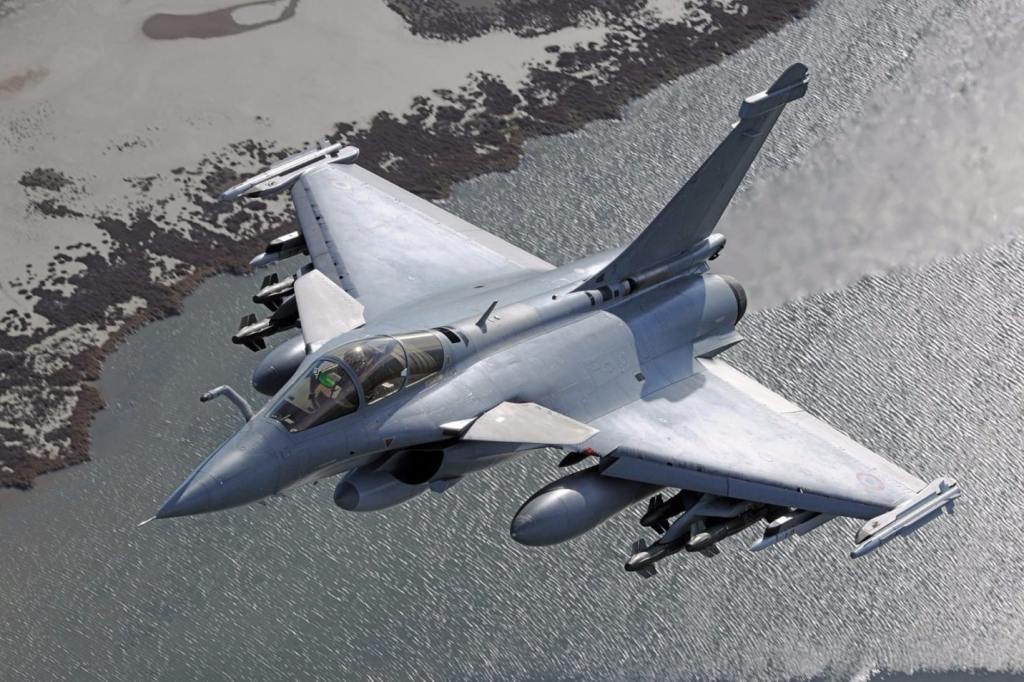
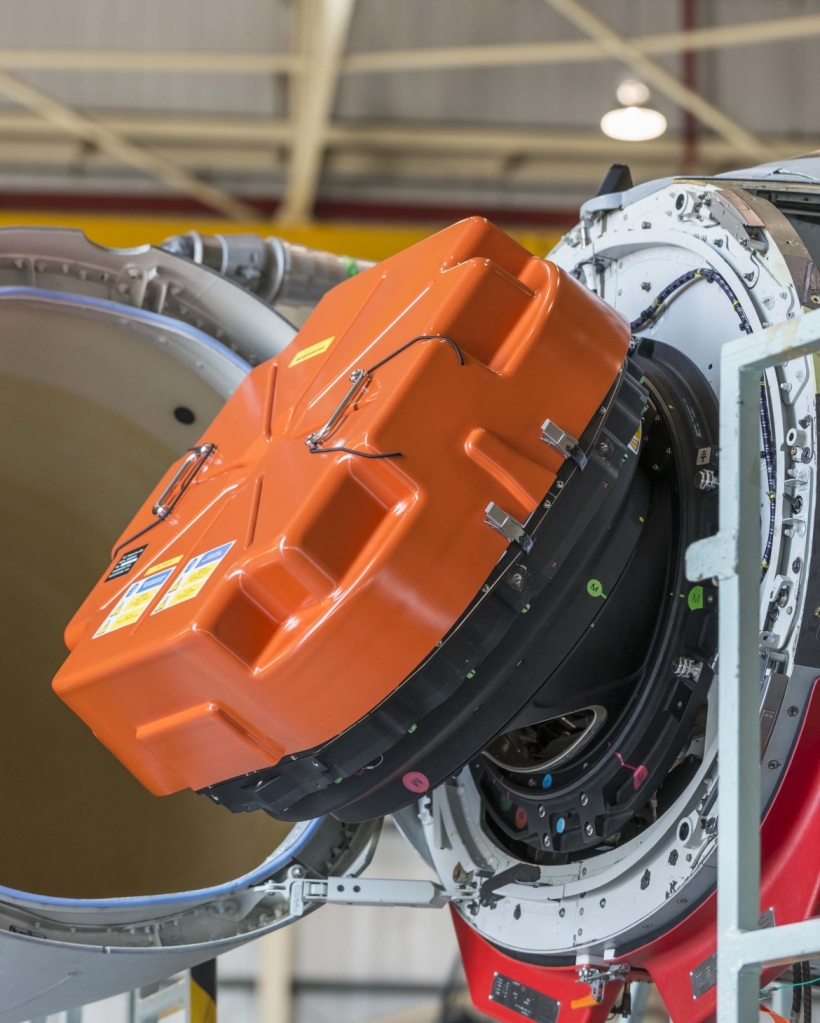
At time of writing the following comparisons would be for the latest F3R Standard Rafale with the RBE2 AESA radar vs a Typhoon FGR.4 in UK service with the CAPTOR-M. I will add an estimate in brackets for the Kuwaiti/Qatari standard Typhoon with the ‘Radar 0’ version of the CAPTOR-E AESA which is flying and enters service this year in Kuwait. For reference the German/Spanish ‘Radar 1’ standard will add further capabilities and the UK’s ECRS2 version will be a different beast entirely with advanced ground mapping, GMTI and EW capabilities in addition to traditional AESA functions. However, those will not be in service for several years so are not included here.
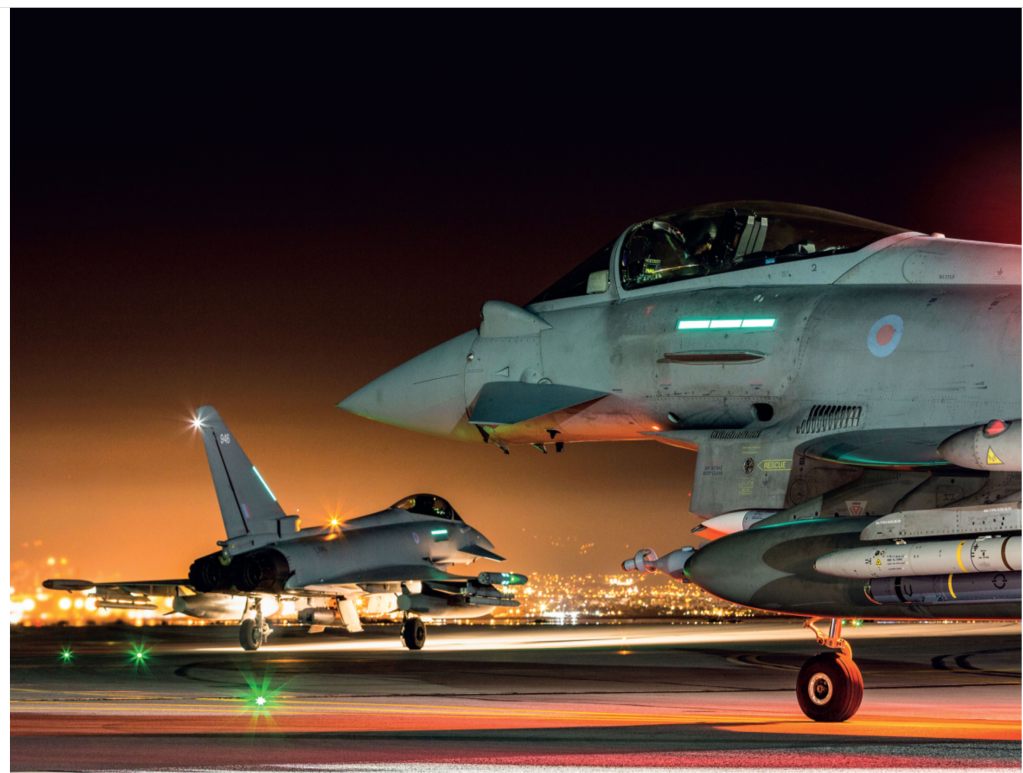
Air-to-air engagements at long ranges
The RBE2 (has the advantage) against targets with a low radar cross section due to the greater performance of AESA types against these threats. CAPTOR-M (has the advantage) against larger targets such as bombers or MiG-31 ‘Foxhound’s due to a much larger aperture and generally higher altitude perch during air-to-air engagements. (Radar 0 will out-range both against airborne targets)
Air-to-air engagements at short ranges and why?
RBE2 due to much faster AESA scan, acquisition and classification of target capabilities, greater resistance to dropping contacts during manoeuvres, as well as excellent information display for pilots in F3R cockpit. (RBE2 likely to still beat Radar 0 upon IOC due to more mature system and HMI).
Air-to-ground
A radar gives far more air-to-ground functionality than CAPTOR-M. (Radar 0 is optimised for air-to-air and is unlikely to challenge RBE2 in this arena).
Maritime attack
RBE2 again due to advantages of AESA array plus a more mature maritime attack mode with Exocet integrated. Typhoon has anti-ship munition options but no current operators use them.
Which aircraft has a superior infra-red search and track system and why?
Typhoon with the PIRATE system is significantly ahead of the legacy Rafale IRST. The latter was deleted from the latest F3R standard aircraft pending an updated capability in the F4 standard jets, leaving a laser rangefinder/EO ball only. PIRATE is a genuinely exceptional IRST, although for years shortages of spare parts limited its use by various frontline squadrons.
Cockpit layout/man-machine interface
Both aircraft have similar cockpit layouts in most respects, with three large main multifunction colour displays capable of significant customisation to suit individual pilot preferences in the latest versions. Both are significantly cleaner in terms of switches and clutter than previous generations of aircraft and slightly cleaner than current generation F-15s and F-16s in USAF service. A pilot from either of those two fighters would find little out of place or unfamiliar in terms of cockpit layout, although the internal menus and system logic may be different from what they are used to. By dint of being complex multi role single seat (in most cases) fighters, the HOTAS controls are fairly intimidating to someone used to a US teen series (or my DCS A-10C/F-16 HOTAS), but once mastered are extremely comprehensive. Having ‘flown’ full fidelity Typhoon simulators in Italy and the UK, including the latest Project Centurion multi-role standard now used by the RAF, I was impressed by the intuitive ‘feel’ of the human-machine interface (HMI) across various multi role tasks. Unfortunately I haven’t had the opportunity to do the same with the French Air Force (hint hint mes amis!). According to all the Rafale pilots I have spoken to, the Rafale’s F3R standard HMI is superb from an operator’s point of view in multirole scenarios, especially in terms of displaying threat information.
The central display protruding out towards the pilot in the Rafale would be a matter of personal taste over the more traditional Typhoon display layout, with an easier view of the main radar/situational awareness display coming at the cost of slightly reduced cockpit working area in a cockpit already slightly more snug than Typhoon’s. The Typhoon has an advantage in terms of a mature helmet mounted display (HMD) system in the form of the Striker helmet, and an extremely advanced follow on (the Striker II) is well into testing with integral night vision, multi role visual/voice target designation capabilities and other advancements. Meanwhile the new Qatari standard Rafales are being delivered with the type’s first HMD, but the French Air Force still lacks this capability, and the system is still to be matured.
Maintenance/sortie rates/operating costs/cost
Both fighters are fairly expensive to operate compared to solutions such as Gripen or F-16 on a one-for-one basis, being large, complex, twin engined beasts. The exact cost per flight hour (a hugely contentious topic anyway) will depend greatly on which operator and which version you are looking at. For example, Spanish Typhoons cost a great deal more to fly than British ones since the RAF flies its fleet a lot more and has more streamlined maintenance support arrangements. However, even within the RAF, the older Tranche 1s are much more costly to fly and difficult to maintain than the new Tranche 3s. Rafale operating costs and availability likewise varies across standards and operators. In extremely broad brush terms, French Rafales sit somewhere in the middle in terms of operating costs compared to Typhoon, being slightly more expensive than the UK’s Tranche 2 and 3 Typhoons under the TyTan support arrangements but cheaper than Spain or Germany’s Typhoons. For export operators, things are much more dependent on fleet size and support contract structures than the differences between each aircraft type.
Both types are highly tolerant of bad weather conditions although Rafale-M has an edge in terms of landing conditions tolerances due to the carrier-suitability adaptions.
In terms of unit cost, Rafale is marketed as cheaper than the latest standards of Typhoon, although the Indian experience would suggest that in practice export customer requirements on industrial offsets and liability can dramatically alter costs compared to the up-front offer, so I’d be wary of comparing public cost claims from either manufacturer. The actual cost will depend on the govt-govt relationship and how many of the bells and whistles each customer wants to pay for. However, as a rule Rafale is probably slightly cheaper in real terms to acquire than Typhoon.
Low-observability
Both Rafale and Typhoon have low observable features but quite frankly neither is a low observable type. Completely slicked off with no external stores or targeting pods, a Rafale would likely have a lower frontal RCS compared to a Typhoon, but in practice neither would be combat effective in this configuration. With external pylons, tanks, weapons and pods, both have a sufficient RCS to be detected at long ranges by modern sensors such as the Irbis-E on the Su-35 and Chinese AESAs on J-10C, J-16 or J-20, as well as ground based air defence radars.
Aerodynamics and performance
It is said that the Rafale would have an advantage in a dogfight below 10K feet and a Typhoon above, would you agree with this?
In within-visual range combat, both Typhoon and Rafale would likely destroy each other in the merge in a 1v1 or 2v2. However, if talking about a ‘guns’ fight, then Rafale has better agility, instantaneous turn and sustained turn capabilities below around 15,000ft. Between 15,000 and around 30,000ft the relative merits will depend on speed range, as if the Typhoon might start with an advantage in a supersonic merge but Rafale would improve relatively as speeds drop during a long engagement. In practice it would depend on pilot experience and skill to fly their aircraft at best corner speed and manage their energy and position to best effect. At higher altitudes, Typhoon’s greater specific excess power and decoupled canards give it a slight advantage, which increases as altitude increases above 45,000ft.
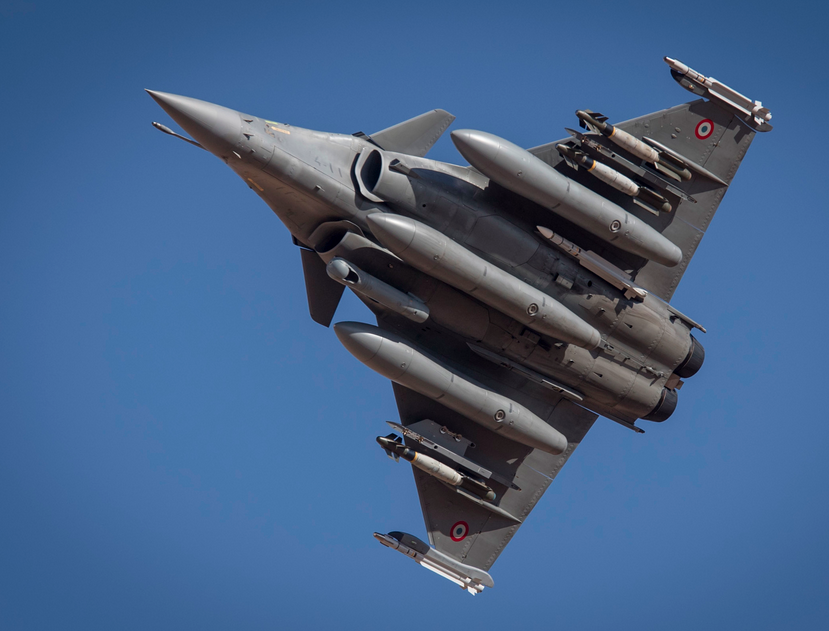
What is Typhoon’s configuration designed to excel at, and the same for Rafale?
Typhoon is designed to excel in acceleration, climb rate and supersonic performance and agility at high altitudes for maximum beyond visual range capability. Rafale is designed to excel at subsonic speeds and at lower altitudes. It is still a brutal performer compared to most other fighters, but cannot match Typhoon’s climb rate and brute thrust especially at higher altitudes. With heavy loads, however, Rafale performs significantly better than Typhoon across the almost the entire performance envelope, having been designed from the outset to incorporate heavy multirole loads. Typhoon’s flight control software starts to progressively restrict the jet with heavier (or particularly asymmetric) loads. The Aerodynamic Modification Kit (AMK) developed by Eurofighter would address these limitations and greatly improve the instantaneous turn rate and agility at all speeds with heavy loads, but so far no operator has bought it – suggesting they are broadly satisfied with the aircraft as is.
High alpha performance
Neither aircraft sparkles in the high-alpha regime compared to the Hornet family or anything with thrust vectoring, but the Rafale’s aerodynamically coupled canards give it slightly better high-alpha authority at slow speeds than Typhoon.
Abilities at different altitudes
The lower the altitude, the greater Rafale’s margin of advantage; the higher one goes, the better Typhoon performs relatively. Typhoon is happiest at 50,000ft and above.
Sustained/Instantaneous turn rates
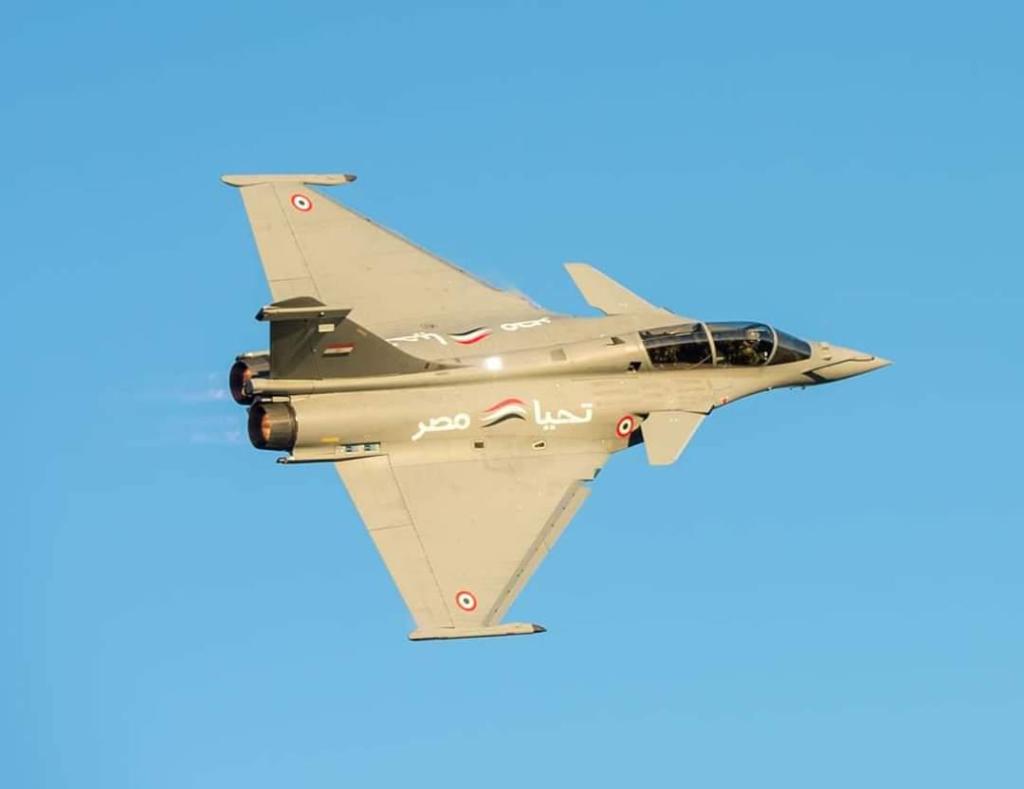
Depends on altitude and speed. As above, the higher the speed and altitude of an engagement, the better Typhoon performs relative to Rafale and vice versa. In terms of instantaneous turn rate, Rafale has a slight advantage in air combat configuration and that increases with heavier multirole or strike loads.
Energy management/ ability to regenerate energy
Both fighters will pull 9G all day long in air combat configuration at most altitudes. At low altitudes Rafale’s energy retention is slightly better at best corner speed, whilst at higher altitudes Typhoon has better energy retention. In terms of energy regeneration, Typhoon has the edge by dint of a higher specific excess power.
Range and endurance
Both types have a similar ferry range with a ‘heavy’ three tank fit. However, Typhoon also uses a lot more fuel in afterburner so for mission profiles that involve a lot of AB use, Rafale will likely have the edge. In practice, both types depend to a large degree on tanker support for most operational missions.
CONTINUA....

In 2015, Research Fellow at the RUSI Think-tank Justin Bronk, compared Europe’s two middle-weight fighter aircraft, the Typhoon and Rafale, The relatively subtle differences between these two superbly capable aircraft have inspired a great deal of heated debate, often poisoned by pride and nationalism. His article provoked a great huge response from readers around the world. We went back to Justin Bronk and asked him to revisit this analysis to include half a decade’s worth of development and weapons integration which has now placed these two aircraft at the top of their game.
Justin Bronk is a Research Fellow of Military Sciences at the Royal United Services Institute and Editor of RUSI Defence Systems.
What is the biggest difference in the philosophy of the designs?
“With common DNA in terms of initial development and requirements setting work before France spilt away from what became the Eurofighter consortium to develop the Rafale, it is unsurprising that both aircraft have relatively similar design philosophies compared to their competitors globally. The biggest source of differences comes from the French requirement that the basic airframe design be suitable for CATOBAR carrier operations, which carries particular requirements in terms of relatively high-alpha, low speed handling especially with external stores still attached. The Rafale was also designed from the outset as a nuclear delivery system, which was not a major consideration for the Eurofighter nations.
In terms of the design philosophy effects on the final aircraft, the Rafale has a greater emphasis on load carrying and exceptional handling even at very low speeds whilst the Typhoon as a design is more focused on maximum performance at altitude, and agility at transonic and supersonic speeds. This is all relative, however, as both aircraft perform very similarly in most scenarios compared to other types.
Radar


At time of writing the following comparisons would be for the latest F3R Standard Rafale with the RBE2 AESA radar vs a Typhoon FGR.4 in UK service with the CAPTOR-M. I will add an estimate in brackets for the Kuwaiti/Qatari standard Typhoon with the ‘Radar 0’ version of the CAPTOR-E AESA which is flying and enters service this year in Kuwait. For reference the German/Spanish ‘Radar 1’ standard will add further capabilities and the UK’s ECRS2 version will be a different beast entirely with advanced ground mapping, GMTI and EW capabilities in addition to traditional AESA functions. However, those will not be in service for several years so are not included here.

Air-to-air engagements at long ranges
The RBE2 (has the advantage) against targets with a low radar cross section due to the greater performance of AESA types against these threats. CAPTOR-M (has the advantage) against larger targets such as bombers or MiG-31 ‘Foxhound’s due to a much larger aperture and generally higher altitude perch during air-to-air engagements. (Radar 0 will out-range both against airborne targets)
Air-to-air engagements at short ranges and why?
RBE2 due to much faster AESA scan, acquisition and classification of target capabilities, greater resistance to dropping contacts during manoeuvres, as well as excellent information display for pilots in F3R cockpit. (RBE2 likely to still beat Radar 0 upon IOC due to more mature system and HMI).
Air-to-ground
A radar gives far more air-to-ground functionality than CAPTOR-M. (Radar 0 is optimised for air-to-air and is unlikely to challenge RBE2 in this arena).
Maritime attack
RBE2 again due to advantages of AESA array plus a more mature maritime attack mode with Exocet integrated. Typhoon has anti-ship munition options but no current operators use them.
Which aircraft has a superior infra-red search and track system and why?
Typhoon with the PIRATE system is significantly ahead of the legacy Rafale IRST. The latter was deleted from the latest F3R standard aircraft pending an updated capability in the F4 standard jets, leaving a laser rangefinder/EO ball only. PIRATE is a genuinely exceptional IRST, although for years shortages of spare parts limited its use by various frontline squadrons.
Cockpit layout/man-machine interface
Both aircraft have similar cockpit layouts in most respects, with three large main multifunction colour displays capable of significant customisation to suit individual pilot preferences in the latest versions. Both are significantly cleaner in terms of switches and clutter than previous generations of aircraft and slightly cleaner than current generation F-15s and F-16s in USAF service. A pilot from either of those two fighters would find little out of place or unfamiliar in terms of cockpit layout, although the internal menus and system logic may be different from what they are used to. By dint of being complex multi role single seat (in most cases) fighters, the HOTAS controls are fairly intimidating to someone used to a US teen series (or my DCS A-10C/F-16 HOTAS), but once mastered are extremely comprehensive. Having ‘flown’ full fidelity Typhoon simulators in Italy and the UK, including the latest Project Centurion multi-role standard now used by the RAF, I was impressed by the intuitive ‘feel’ of the human-machine interface (HMI) across various multi role tasks. Unfortunately I haven’t had the opportunity to do the same with the French Air Force (hint hint mes amis!). According to all the Rafale pilots I have spoken to, the Rafale’s F3R standard HMI is superb from an operator’s point of view in multirole scenarios, especially in terms of displaying threat information.
The central display protruding out towards the pilot in the Rafale would be a matter of personal taste over the more traditional Typhoon display layout, with an easier view of the main radar/situational awareness display coming at the cost of slightly reduced cockpit working area in a cockpit already slightly more snug than Typhoon’s. The Typhoon has an advantage in terms of a mature helmet mounted display (HMD) system in the form of the Striker helmet, and an extremely advanced follow on (the Striker II) is well into testing with integral night vision, multi role visual/voice target designation capabilities and other advancements. Meanwhile the new Qatari standard Rafales are being delivered with the type’s first HMD, but the French Air Force still lacks this capability, and the system is still to be matured.
Maintenance/sortie rates/operating costs/cost
Both fighters are fairly expensive to operate compared to solutions such as Gripen or F-16 on a one-for-one basis, being large, complex, twin engined beasts. The exact cost per flight hour (a hugely contentious topic anyway) will depend greatly on which operator and which version you are looking at. For example, Spanish Typhoons cost a great deal more to fly than British ones since the RAF flies its fleet a lot more and has more streamlined maintenance support arrangements. However, even within the RAF, the older Tranche 1s are much more costly to fly and difficult to maintain than the new Tranche 3s. Rafale operating costs and availability likewise varies across standards and operators. In extremely broad brush terms, French Rafales sit somewhere in the middle in terms of operating costs compared to Typhoon, being slightly more expensive than the UK’s Tranche 2 and 3 Typhoons under the TyTan support arrangements but cheaper than Spain or Germany’s Typhoons. For export operators, things are much more dependent on fleet size and support contract structures than the differences between each aircraft type.
Both types are highly tolerant of bad weather conditions although Rafale-M has an edge in terms of landing conditions tolerances due to the carrier-suitability adaptions.
In terms of unit cost, Rafale is marketed as cheaper than the latest standards of Typhoon, although the Indian experience would suggest that in practice export customer requirements on industrial offsets and liability can dramatically alter costs compared to the up-front offer, so I’d be wary of comparing public cost claims from either manufacturer. The actual cost will depend on the govt-govt relationship and how many of the bells and whistles each customer wants to pay for. However, as a rule Rafale is probably slightly cheaper in real terms to acquire than Typhoon.
Low-observability
Both Rafale and Typhoon have low observable features but quite frankly neither is a low observable type. Completely slicked off with no external stores or targeting pods, a Rafale would likely have a lower frontal RCS compared to a Typhoon, but in practice neither would be combat effective in this configuration. With external pylons, tanks, weapons and pods, both have a sufficient RCS to be detected at long ranges by modern sensors such as the Irbis-E on the Su-35 and Chinese AESAs on J-10C, J-16 or J-20, as well as ground based air defence radars.
Aerodynamics and performance
It is said that the Rafale would have an advantage in a dogfight below 10K feet and a Typhoon above, would you agree with this?
In within-visual range combat, both Typhoon and Rafale would likely destroy each other in the merge in a 1v1 or 2v2. However, if talking about a ‘guns’ fight, then Rafale has better agility, instantaneous turn and sustained turn capabilities below around 15,000ft. Between 15,000 and around 30,000ft the relative merits will depend on speed range, as if the Typhoon might start with an advantage in a supersonic merge but Rafale would improve relatively as speeds drop during a long engagement. In practice it would depend on pilot experience and skill to fly their aircraft at best corner speed and manage their energy and position to best effect. At higher altitudes, Typhoon’s greater specific excess power and decoupled canards give it a slight advantage, which increases as altitude increases above 45,000ft.

What is Typhoon’s configuration designed to excel at, and the same for Rafale?
Typhoon is designed to excel in acceleration, climb rate and supersonic performance and agility at high altitudes for maximum beyond visual range capability. Rafale is designed to excel at subsonic speeds and at lower altitudes. It is still a brutal performer compared to most other fighters, but cannot match Typhoon’s climb rate and brute thrust especially at higher altitudes. With heavy loads, however, Rafale performs significantly better than Typhoon across the almost the entire performance envelope, having been designed from the outset to incorporate heavy multirole loads. Typhoon’s flight control software starts to progressively restrict the jet with heavier (or particularly asymmetric) loads. The Aerodynamic Modification Kit (AMK) developed by Eurofighter would address these limitations and greatly improve the instantaneous turn rate and agility at all speeds with heavy loads, but so far no operator has bought it – suggesting they are broadly satisfied with the aircraft as is.
High alpha performance
Neither aircraft sparkles in the high-alpha regime compared to the Hornet family or anything with thrust vectoring, but the Rafale’s aerodynamically coupled canards give it slightly better high-alpha authority at slow speeds than Typhoon.
Abilities at different altitudes
The lower the altitude, the greater Rafale’s margin of advantage; the higher one goes, the better Typhoon performs relatively. Typhoon is happiest at 50,000ft and above.
Sustained/Instantaneous turn rates

Depends on altitude and speed. As above, the higher the speed and altitude of an engagement, the better Typhoon performs relative to Rafale and vice versa. In terms of instantaneous turn rate, Rafale has a slight advantage in air combat configuration and that increases with heavier multirole or strike loads.
Energy management/ ability to regenerate energy
Both fighters will pull 9G all day long in air combat configuration at most altitudes. At low altitudes Rafale’s energy retention is slightly better at best corner speed, whilst at higher altitudes Typhoon has better energy retention. In terms of energy regeneration, Typhoon has the edge by dint of a higher specific excess power.
Range and endurance
Both types have a similar ferry range with a ‘heavy’ three tank fit. However, Typhoon also uses a lot more fuel in afterburner so for mission profiles that involve a lot of AB use, Rafale will likely have the edge. In practice, both types depend to a large degree on tanker support for most operational missions.
CONTINUA....
- Frederico Vitor
- Sênior

- Mensagens: 2059
- Registrado em: Ter Ago 14, 2007 1:34 pm
- Localização: Goiás
- Agradeceram: 270 vezes
Re: Eurofighter
Weapons
AMRAAM versus MICA
The AIM-120C7 and AIM-120D variants of AMRAAM used by RAF Typhoons significantly outrange MICA, although they do no boast an IR variant for passive BVR engagement capabilities. The flip side is that both AMRAAM variants have advanced off-board guidance capabilities to allow passive engagements in cooperation with another aircraft in active mode. US development efforts have emphasised these cooperative engagement capabilities (CEC) far more than French ones over the past two decades, and Typhoon benefits from that weapon heritage.
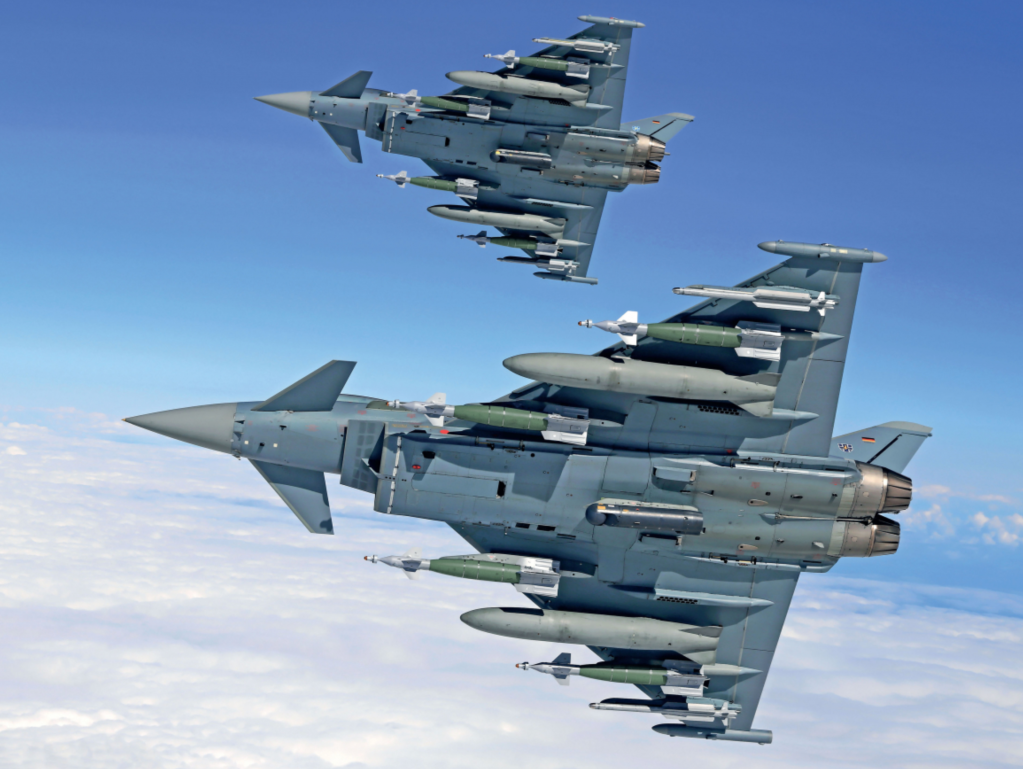
ASRAAM/IRIS-T versus MICA
MICA has slightly superior range to ASRAAM and significantly superior range to IRIS-T. All are highly agile and lethal missiles in a WVR engagement, with IRIS-T boasting the greatest knife fight agility, ASRAAM the best performance off the rail, and MICA the best reach. The lack of a helmet mounted sight for Rafale until the Qatari standard has meant that in practice Typhoon users may be able to get more out of IRIS-T or ASRAAM in a dynamic WVR engagement.
BK27 versus GIAT cannon
Both are devastating revolver cannons with selectable rates of fire. The GIAT has the advantage in maximum possible firing rate (of 2500rpm vs 1700rpm) although in practice both would likely fire at comparable rates for both air-to-air or air-to-ground use to make best use of very limited ammunition (125 rounds for Rafale, 150 for Typhoon). As revolver cannons, both reach their maximum fire rate almost immediately. The BK27 has slightly better muzzle velocity and ballistic properties whilst the GIAT has slightly better destructive effect due to its larger shell. In practice, there is little to choose between them, I pity the enemy shot at by either.
Air-to-ground munitions
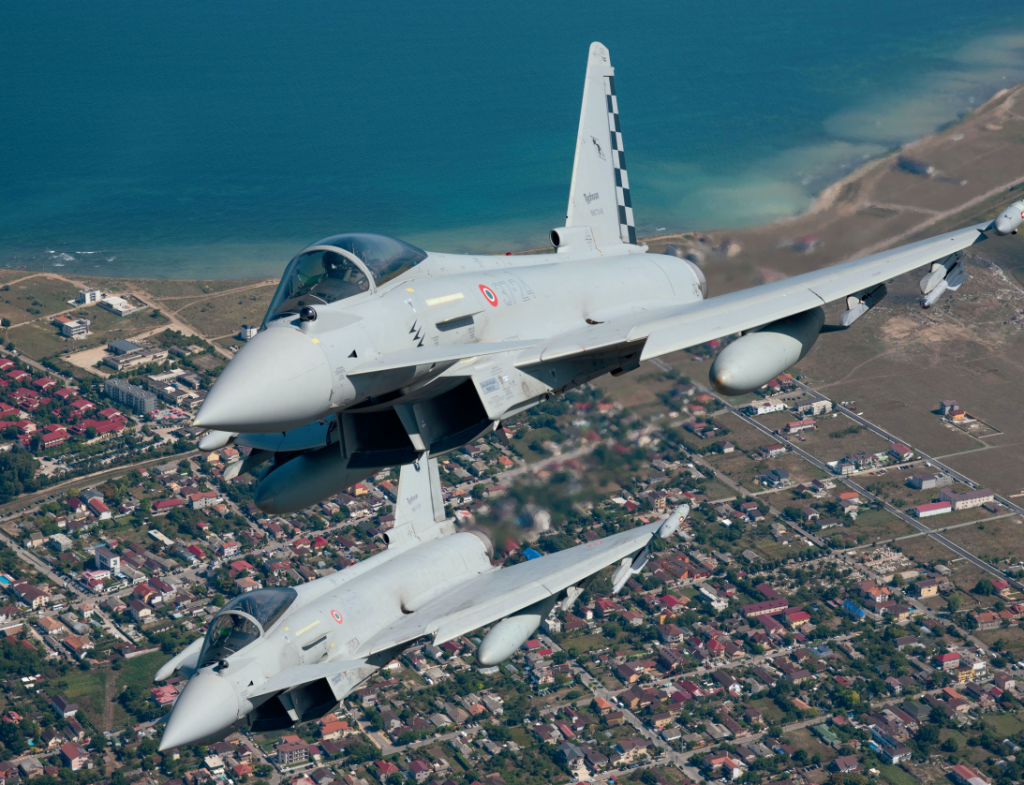
Typhoon (Tranche 2 and 3)’s main strike armament of Paveway IV, Brimstone and Storm Shadow give it world-leading high-precision, low-collateral damage tools for most ground targets. It can also carry other munitions including the US Paveway II and III series of laser-guided bombs, and has been cleared for the AGM-88 HARM and British ALARM anti-radiation missiles although these are not in operational service. The ongoing flight trials of the SPEAR 3 multirole light standoff munition (which includes an EW variant for stand-in jamming) on UK Typhoons give the type access to another highly potent option, although at present the UK is only paying to actually use SPEAR 3 on F-35B. France’s AASM ‘Hammer’ series of glide and boosted bomb guidance kits gives Rafale a comparable capability to Paveway IV with a greater amount of warhead and range flexibility. The drawback is extremely high munitions cost. At the lower end, the Rafale can also carry and deliver the US made Paveway II and III series and like Typhoon is cleared to carry but does not currently use a range of other US munitions.
Recce equipment
Typhoon has to make do with a less than fully optimised TAC-R pod as the RAPTOR pod fitted to Tornado GR.4 was not integrated when the latter was retired – in part because of centreline store size limitations on Typhoon due to the front landing gear leg placement. Rafale uses the Damocles targeting pod for light recce duties whilst RAF Typhoons use the Lightning III which also has limited FOV recon capabilities. However, Rafale can also use the RECO-NG wide area/standoff TAC-R pod to provide a modern, fully digital equivalent to RAPTOR. This is a significant advantage over Typhoon in the TAC-R role. Typhoon export users employ the Damocles pod (Saudi Arabia) and the Sniper pod (Kuwait). The Damocles pod has an advantage over Sniper and Lightning III in that it features an integral datalink capability to transfer reconnaissance and target data directly to other stations such as those found on French Air Force tankers. In practice, however, Typhoon users with Sniper or Lightning III can off-board data using the jet’s own datalinks.
Brimstone versus Hammer
Brimstone is more accurate with a much smaller ultra-low collateral warhead. AASM is dependent on either IR or laser-guidance to hit moving targets, rendering it more sensitive to adverse conditions than Brimstone’s millimetric wave radar seeker/laser dual mode guidance option. Brimstone’s smaller size also allows more weapons to be carried per aircraft, with three per hardpoint on adaptors. However, Brimstone is not designed to produce area effects or destroy structures, so for such targets the AASM family provides far more capability, especially with the larger ‘bomb’ body variants. For such targets, Typhoon users would employ Paveway II/III/IV series weapons.
Cruise missile capability
Rafale’s SCALP and Typhoon’s Storm Shadow are essentially the same (extremely capable but very expensive) missile from MBDA. Germany has cleared its Taurus KEPD 350 cruise missile but since German politicians do not believe that Air Forces should be used to kill people, its capabilities remain untested in combat. The French Rafales can also carry the ASMP-A nuclear standoff missile which is a unique capability.
Defence suppression/anti shipping
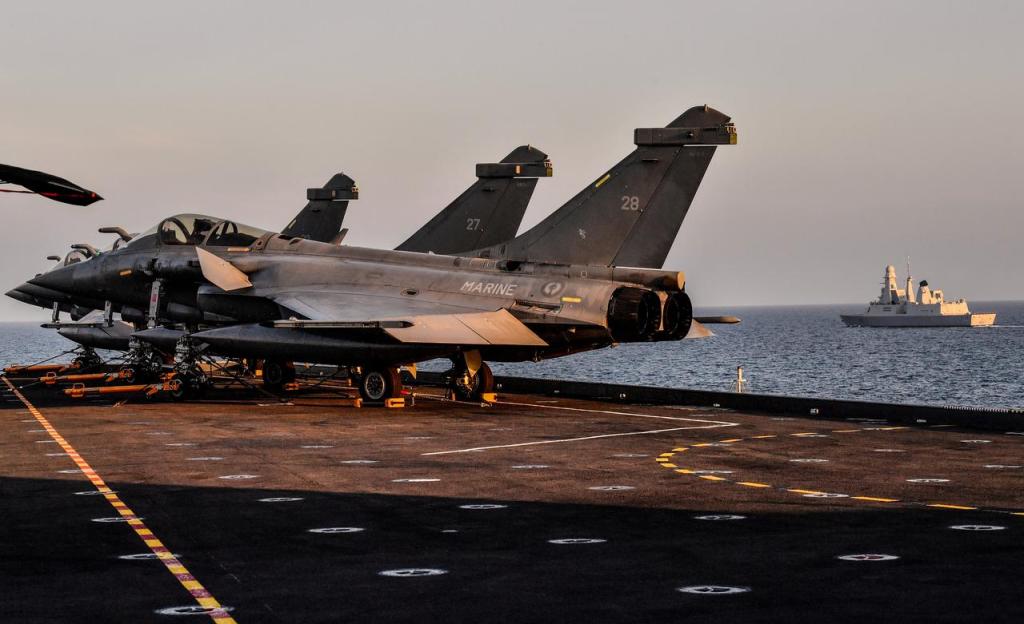
Both Typhoon and Rafale lack a commonly carried anti-radiation missile, although modern AAM such as AMRAAM and Meteor can be assumed to have a certain degree of ARM capability in extremis. Rafale has a superior ECM (electronic attack) capability in the shape of the SPECTRA suite allowing it more options to degrade the performance of hostile SAM radars if it needs to penetrate defended airspace. Typhoon users will have to wait for the UK-developed ECRS2 radar and DAS upgrade for a competitive or even (potentially) superior option. Both Typhoon and Rafale can launch capable standoff cruise missiles in the shape of the Storm Shadow/SCALP and Taurus KEPD 350. However, to have a decent probability of kill against modern long range air defence radars, these missiles require accurate real time target location data. This is because modern SAM systems such as the S-400 and HQ-9 are highly mobile and have such long range that a subsonic cruise missile launched from a safe distance would take tens of minutes to arrive. As such, both Typhoon and Rafale could make a very valuable contribution to a SEAD/DEAD operation in support of more stealthy penetrating ISTAR/strike assets such as F-35 or advanced UAVs, but if hypothetically forced to fight alone neither is particularly well suited at present – Rafale having a slight edge due to the SPECTRA suite.
Meteor
I’m not 100% sure if Rafale can now use the full two-way datalink functionality on Meteor. I think that is now enabled. Typhoon’s habit of fighting at very high speeds and altitude for BVR engagements will result in a longer effective range on Meteor shots, but in practice there are almost no scenarios short of a full scale war with Russia where the rules of engagement would allow shots at such a range where that difference would tell. Both can use third party target data to launch Meteor without active radar scanning by the launch aircraft, and both can hand off guidance in flight to other friendly assets. The UK’s Typhoons in particular are more closely integrated with the USAF air dominance community than (any) other fighter arm so have more practice in getting the most out of cooperative engagements with F-22s in realistic training scenarios.
How frequently is Meteor actually carried in 2020?
Tranche 2 and 3 Typhoons regularly carry Meteor on live operational sorties with European users, although the Tranche 1s do not use the missile which is why the RAF purchased the latest AIM-120D for its remaining Tranche 1s. For Rafale, Meteor is regularly carried by the F3R standard aircraft on live operational sorties by both the Armee de l’Air and Aeronavale.
How many Meteors are carried on a single-aircraft in everyday service?
RAF Typhoons and French Air Force Rafales typically carry two Meteors when flying with the missile.
How many Meteor could be carried in a wartime emergency?
The wartime load-out for Typhoon would by four Meteor in semi-recessed fuselage mounts plus four ASRAAM/IRIS-T although in practice a mix of Meteor and AMRAAM might be chosen for additional tactical flexibility and stockpile management. As far as I’m aware the Rafale has so far only been cleared for Meteor carriage on the two side-fuselage hardpoints although I could be wrong on that. If it was a priority to up the Meteor carriage on Rafale to four, I expect that could be done at the cost of MICA numbers on the centre underwing station.
Sensor fusion
Both Rafale F3R and P3E standard (Centurion upgraded) Typhoons present pilots with an intuitive combined situational awareness display which integrates data from multiple sensors. In that sense, both feature sensor fusion and represent a significant upgrade compared to legacy aircraft and previous Rafale and Typhoon standards. However, neither truly does the F-35’s signature trick of feeding the raw sensor inputs into a complex analytical process which cross references data from and cross cues not only each sensor on the jet but also those across a formation of F-35s, before presenting a processed single SA picture to the pilot. There’s a reason (beyond the undoubted inefficiencies and concurrency) why the US have had to put nearly half a trillion dollars into the F-35 programme to date, mostly aimed at getting the nightmarishly ambitious and complex software architecture to work. They’re trying to do something much more ambitious; although in many scenarios the output is functionally similar.
Defensive aids
SPECTRA has a better reputation primarily because of Libya in 2011 (a result of French political ambition and risk tolerance, alongside technical capability). However, it is a highly capable defensive aids suite, with greater strength on the ECM area of the ESM/ECM/ECCM EW triad compared to Typhoon’s DAS which is notable in the quality of its ESM (passive detection, ID and tracking of threats). The Indian standard Rafales come with a Towed Radar Decoy (TRD) but the French aircraft currently lack this feature. Typhoon comes with one or two TRDs mounted in a wingtip pod as standard, with specific version dependent on operator choices. The UK’s new Britecloud active radar ‘chaff’ countermeasures are another area where Typhoon is potentially somewhat in the lead on DAS features.

The leaked Swiss evaluation rated Rafale superior in almost every category- would this still be the case?
The Swiss competition was horrendously mismanaged by the Eurofighter consortium with a buggy Tranche 1 jet sent to compete with the best that Saab and Dassault could bring to the table. However, in terms of radar, the Rafale would still come out ahead due to its mature RBE2. In terms of load carrying capacity, ECM, subsonic agility, low and medium altitude WVR performance and cost Rafale F3R would also likely still come out ahead of a Tranche 2 or 3 P3E standard Typhoon. However, an RAF standard Tranche 3 Typhoon would likely come out ahead on BVR performance, interceptor missions (due to extreme rate of climb and performance), ESM, terminal countermeasures and low-collateral strike capabilities. Frankly, Switzerland should be flying Gripen C/D or possibly E/F given their national budget, neutrality and mission requirements and I’d wager anyone who looks at it from an operational requirements point of view would come to a similar conclusion. Shame about the whole referendum thing for the Swiss Air Force.
How has Typhoon improved since your 2015 assessment?
The multirole capabilities of the jet have matured drastically since 2015, especially as a result of the RAF’s Project Centurion programme which integrated Brimstone, full Paveway IV functionality and Storm Shadow, in addition to full Striker HMD exploitation and a number of other multirole enabling capabilities. The integration of full Meteor capability and upgrades to the UK’s ESM capabilities within the DAS are also a big boost. The fact that Kuwaiti Typhoons are already flying with the export AESA is a welcome but long overdue improvement but Typhoon really continues to lag in terms of exploitation of its huge potential (given the massive nose aperture and power available) in the AESA department.
The German/Spanish Radar 1 order will, however, mean that there are a large number of AESA equipped Typhoons in service by the mid-2020s with all the Quadriga and Tornado replacement Typhoons to feature the capability. The UK’s much more ambitious (and now funded) ECRS2 promises a massive leap in AESA capability with areas of advantage even over the latest US AESAs, but is so far only likely to be integrated onto the 40 Tranche 3s, with the fate of the 67 Tranche 2s less certain in that regard.
Rafale improved since your 2015 assessment?
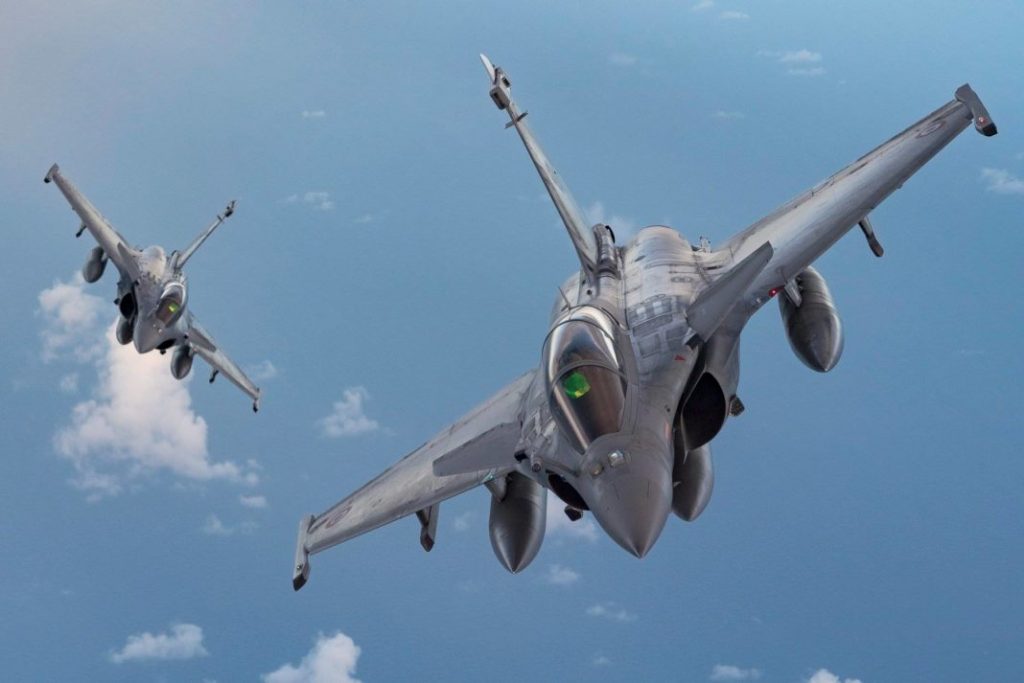
The integration of the Meteor missile for the F3R standard Rafales has plugged a major weakness of the type in my 2015 assessments – the lack of a serious BVR stick. The RBE2 radar has continued to mature and is now a standout feature of the jet, whilst the French government has committed to a major upgrade of the jet’s internal systems and sensors in the upcoming F4 standard programme. This means that the Rafale will continue to improve, especially in the EW and sensor fusion department throughout the 2020s.
What is the best Typhoon variant today and why?
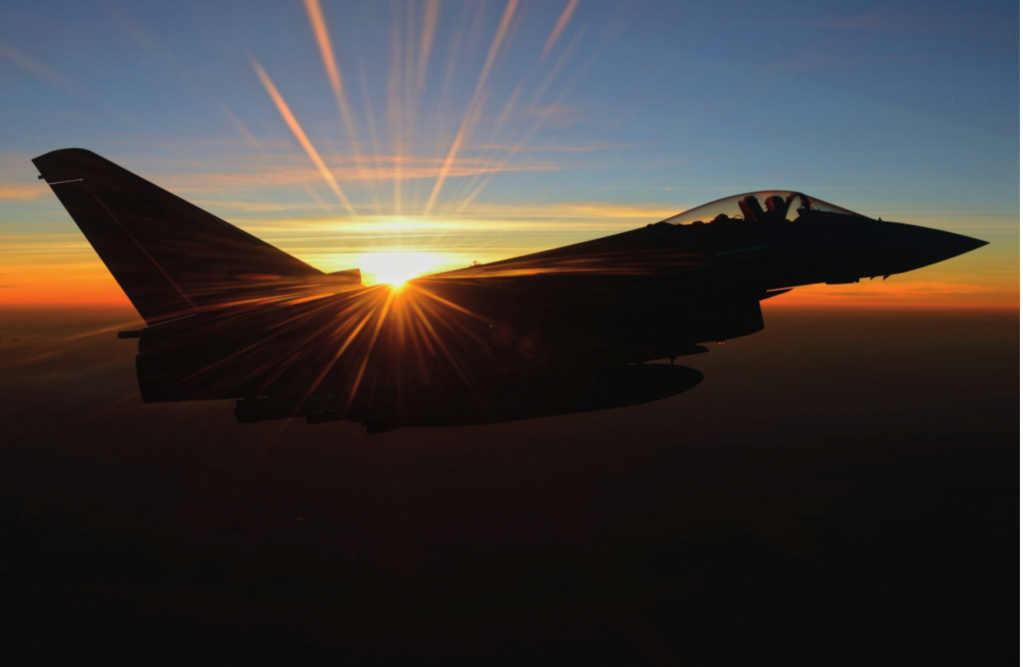
The RAF’s Tranche 3 jets. With the Centurion upgrades, Meteor integration and an extremely experienced user community both in terms of strike/multirole missions and air superiority, the RAF’s Tranche 3 Typhoons would edge out the Kuwaiti and Qatari aircraft in terms of operational capability, even though the latter feature the export version of the CAPTOR-E radar series.
What is the best Rafale variant today and why?
That’s tricky to say. The Indian standard does feature some impressive additions including additional podded electronic warfare capabilities and TRD, whilst the Qatari standard features the new HMD. Both include the RBE2 although it is likely to be an export standard that is slightly de-tuned compared to French aircraft. The French Air Force’s latest F3R aircraft with the RBE2 and Meteor are, on balance, likely to be the most capable Rafales around for much the same reasons as the RAF’s Tranche 3 Typhoons are. Highly experienced crews, full DAS and radar capabilities without export restrictions (and a nuclear missile capability).
Which is doing better on the export market and why?

Rafale has had some impressive success on the export market since 2015, with the combination of RBE2 radar, combat record in Libya and aggressive French state support for marketing efforts contributing to success in Egypt, Qatar and Greece (as well as India). Typhoon has had successes in Qatar and Kuwait, and a signature of intent from Saudi Arabia for another 48 aircraft soon. However, the biggest win in recent years is for Typhoon from Germany for both the Quadriga-standard replacement order for the Tranche 1s and also 90 aircraft to replace Germany’s Tornado fleet in the conventional strike role. This doesn’t really count as an export success though. Finland will be an interesting result to watch, but I’m not sure either aircraft could be considered a favourite.
What should I have asked you?
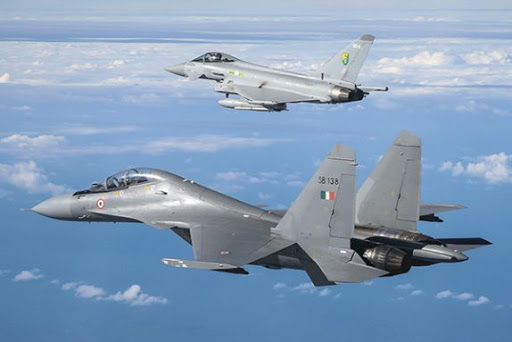
Which aircraft would fare better against the Flanker family and other aircraft likely to be flown by near-peer competitors such as the Chinese J-10 family? After all, Typhoon and Rafale were not built to fight each other, and will not do so. Their job is to deter and if necessary provide overmatch against the latest hostile fighter types. In this role, the Typhoon is probably the standout with its superior BVR capabilities in a large scale, open ROE engagement, but up close in a flashpoint around a QRA interception Rafale might have the edge. In a complex battlespace with dense ground based as well as aerial threats, both Typhoon and Rafale are formidable assets but would rely on support from dedicated penetrating and stand-off assets to minimise risk and truly perform at their best.
 https://hushkit.net/2020/09/17/eurofigh ... omparison/
https://hushkit.net/2020/09/17/eurofigh ... omparison/
AMRAAM versus MICA
The AIM-120C7 and AIM-120D variants of AMRAAM used by RAF Typhoons significantly outrange MICA, although they do no boast an IR variant for passive BVR engagement capabilities. The flip side is that both AMRAAM variants have advanced off-board guidance capabilities to allow passive engagements in cooperation with another aircraft in active mode. US development efforts have emphasised these cooperative engagement capabilities (CEC) far more than French ones over the past two decades, and Typhoon benefits from that weapon heritage.

ASRAAM/IRIS-T versus MICA
MICA has slightly superior range to ASRAAM and significantly superior range to IRIS-T. All are highly agile and lethal missiles in a WVR engagement, with IRIS-T boasting the greatest knife fight agility, ASRAAM the best performance off the rail, and MICA the best reach. The lack of a helmet mounted sight for Rafale until the Qatari standard has meant that in practice Typhoon users may be able to get more out of IRIS-T or ASRAAM in a dynamic WVR engagement.
BK27 versus GIAT cannon
Both are devastating revolver cannons with selectable rates of fire. The GIAT has the advantage in maximum possible firing rate (of 2500rpm vs 1700rpm) although in practice both would likely fire at comparable rates for both air-to-air or air-to-ground use to make best use of very limited ammunition (125 rounds for Rafale, 150 for Typhoon). As revolver cannons, both reach their maximum fire rate almost immediately. The BK27 has slightly better muzzle velocity and ballistic properties whilst the GIAT has slightly better destructive effect due to its larger shell. In practice, there is little to choose between them, I pity the enemy shot at by either.
Air-to-ground munitions

Typhoon (Tranche 2 and 3)’s main strike armament of Paveway IV, Brimstone and Storm Shadow give it world-leading high-precision, low-collateral damage tools for most ground targets. It can also carry other munitions including the US Paveway II and III series of laser-guided bombs, and has been cleared for the AGM-88 HARM and British ALARM anti-radiation missiles although these are not in operational service. The ongoing flight trials of the SPEAR 3 multirole light standoff munition (which includes an EW variant for stand-in jamming) on UK Typhoons give the type access to another highly potent option, although at present the UK is only paying to actually use SPEAR 3 on F-35B. France’s AASM ‘Hammer’ series of glide and boosted bomb guidance kits gives Rafale a comparable capability to Paveway IV with a greater amount of warhead and range flexibility. The drawback is extremely high munitions cost. At the lower end, the Rafale can also carry and deliver the US made Paveway II and III series and like Typhoon is cleared to carry but does not currently use a range of other US munitions.
Recce equipment
Typhoon has to make do with a less than fully optimised TAC-R pod as the RAPTOR pod fitted to Tornado GR.4 was not integrated when the latter was retired – in part because of centreline store size limitations on Typhoon due to the front landing gear leg placement. Rafale uses the Damocles targeting pod for light recce duties whilst RAF Typhoons use the Lightning III which also has limited FOV recon capabilities. However, Rafale can also use the RECO-NG wide area/standoff TAC-R pod to provide a modern, fully digital equivalent to RAPTOR. This is a significant advantage over Typhoon in the TAC-R role. Typhoon export users employ the Damocles pod (Saudi Arabia) and the Sniper pod (Kuwait). The Damocles pod has an advantage over Sniper and Lightning III in that it features an integral datalink capability to transfer reconnaissance and target data directly to other stations such as those found on French Air Force tankers. In practice, however, Typhoon users with Sniper or Lightning III can off-board data using the jet’s own datalinks.
Brimstone versus Hammer
Brimstone is more accurate with a much smaller ultra-low collateral warhead. AASM is dependent on either IR or laser-guidance to hit moving targets, rendering it more sensitive to adverse conditions than Brimstone’s millimetric wave radar seeker/laser dual mode guidance option. Brimstone’s smaller size also allows more weapons to be carried per aircraft, with three per hardpoint on adaptors. However, Brimstone is not designed to produce area effects or destroy structures, so for such targets the AASM family provides far more capability, especially with the larger ‘bomb’ body variants. For such targets, Typhoon users would employ Paveway II/III/IV series weapons.
Cruise missile capability
Rafale’s SCALP and Typhoon’s Storm Shadow are essentially the same (extremely capable but very expensive) missile from MBDA. Germany has cleared its Taurus KEPD 350 cruise missile but since German politicians do not believe that Air Forces should be used to kill people, its capabilities remain untested in combat. The French Rafales can also carry the ASMP-A nuclear standoff missile which is a unique capability.
Defence suppression/anti shipping

Both Typhoon and Rafale lack a commonly carried anti-radiation missile, although modern AAM such as AMRAAM and Meteor can be assumed to have a certain degree of ARM capability in extremis. Rafale has a superior ECM (electronic attack) capability in the shape of the SPECTRA suite allowing it more options to degrade the performance of hostile SAM radars if it needs to penetrate defended airspace. Typhoon users will have to wait for the UK-developed ECRS2 radar and DAS upgrade for a competitive or even (potentially) superior option. Both Typhoon and Rafale can launch capable standoff cruise missiles in the shape of the Storm Shadow/SCALP and Taurus KEPD 350. However, to have a decent probability of kill against modern long range air defence radars, these missiles require accurate real time target location data. This is because modern SAM systems such as the S-400 and HQ-9 are highly mobile and have such long range that a subsonic cruise missile launched from a safe distance would take tens of minutes to arrive. As such, both Typhoon and Rafale could make a very valuable contribution to a SEAD/DEAD operation in support of more stealthy penetrating ISTAR/strike assets such as F-35 or advanced UAVs, but if hypothetically forced to fight alone neither is particularly well suited at present – Rafale having a slight edge due to the SPECTRA suite.
Meteor
I’m not 100% sure if Rafale can now use the full two-way datalink functionality on Meteor. I think that is now enabled. Typhoon’s habit of fighting at very high speeds and altitude for BVR engagements will result in a longer effective range on Meteor shots, but in practice there are almost no scenarios short of a full scale war with Russia where the rules of engagement would allow shots at such a range where that difference would tell. Both can use third party target data to launch Meteor without active radar scanning by the launch aircraft, and both can hand off guidance in flight to other friendly assets. The UK’s Typhoons in particular are more closely integrated with the USAF air dominance community than (any) other fighter arm so have more practice in getting the most out of cooperative engagements with F-22s in realistic training scenarios.
How frequently is Meteor actually carried in 2020?
Tranche 2 and 3 Typhoons regularly carry Meteor on live operational sorties with European users, although the Tranche 1s do not use the missile which is why the RAF purchased the latest AIM-120D for its remaining Tranche 1s. For Rafale, Meteor is regularly carried by the F3R standard aircraft on live operational sorties by both the Armee de l’Air and Aeronavale.
How many Meteors are carried on a single-aircraft in everyday service?
RAF Typhoons and French Air Force Rafales typically carry two Meteors when flying with the missile.
How many Meteor could be carried in a wartime emergency?
The wartime load-out for Typhoon would by four Meteor in semi-recessed fuselage mounts plus four ASRAAM/IRIS-T although in practice a mix of Meteor and AMRAAM might be chosen for additional tactical flexibility and stockpile management. As far as I’m aware the Rafale has so far only been cleared for Meteor carriage on the two side-fuselage hardpoints although I could be wrong on that. If it was a priority to up the Meteor carriage on Rafale to four, I expect that could be done at the cost of MICA numbers on the centre underwing station.
Sensor fusion
Both Rafale F3R and P3E standard (Centurion upgraded) Typhoons present pilots with an intuitive combined situational awareness display which integrates data from multiple sensors. In that sense, both feature sensor fusion and represent a significant upgrade compared to legacy aircraft and previous Rafale and Typhoon standards. However, neither truly does the F-35’s signature trick of feeding the raw sensor inputs into a complex analytical process which cross references data from and cross cues not only each sensor on the jet but also those across a formation of F-35s, before presenting a processed single SA picture to the pilot. There’s a reason (beyond the undoubted inefficiencies and concurrency) why the US have had to put nearly half a trillion dollars into the F-35 programme to date, mostly aimed at getting the nightmarishly ambitious and complex software architecture to work. They’re trying to do something much more ambitious; although in many scenarios the output is functionally similar.
Defensive aids
SPECTRA has a better reputation primarily because of Libya in 2011 (a result of French political ambition and risk tolerance, alongside technical capability). However, it is a highly capable defensive aids suite, with greater strength on the ECM area of the ESM/ECM/ECCM EW triad compared to Typhoon’s DAS which is notable in the quality of its ESM (passive detection, ID and tracking of threats). The Indian standard Rafales come with a Towed Radar Decoy (TRD) but the French aircraft currently lack this feature. Typhoon comes with one or two TRDs mounted in a wingtip pod as standard, with specific version dependent on operator choices. The UK’s new Britecloud active radar ‘chaff’ countermeasures are another area where Typhoon is potentially somewhat in the lead on DAS features.

The leaked Swiss evaluation rated Rafale superior in almost every category- would this still be the case?
The Swiss competition was horrendously mismanaged by the Eurofighter consortium with a buggy Tranche 1 jet sent to compete with the best that Saab and Dassault could bring to the table. However, in terms of radar, the Rafale would still come out ahead due to its mature RBE2. In terms of load carrying capacity, ECM, subsonic agility, low and medium altitude WVR performance and cost Rafale F3R would also likely still come out ahead of a Tranche 2 or 3 P3E standard Typhoon. However, an RAF standard Tranche 3 Typhoon would likely come out ahead on BVR performance, interceptor missions (due to extreme rate of climb and performance), ESM, terminal countermeasures and low-collateral strike capabilities. Frankly, Switzerland should be flying Gripen C/D or possibly E/F given their national budget, neutrality and mission requirements and I’d wager anyone who looks at it from an operational requirements point of view would come to a similar conclusion. Shame about the whole referendum thing for the Swiss Air Force.
How has Typhoon improved since your 2015 assessment?
The multirole capabilities of the jet have matured drastically since 2015, especially as a result of the RAF’s Project Centurion programme which integrated Brimstone, full Paveway IV functionality and Storm Shadow, in addition to full Striker HMD exploitation and a number of other multirole enabling capabilities. The integration of full Meteor capability and upgrades to the UK’s ESM capabilities within the DAS are also a big boost. The fact that Kuwaiti Typhoons are already flying with the export AESA is a welcome but long overdue improvement but Typhoon really continues to lag in terms of exploitation of its huge potential (given the massive nose aperture and power available) in the AESA department.
The German/Spanish Radar 1 order will, however, mean that there are a large number of AESA equipped Typhoons in service by the mid-2020s with all the Quadriga and Tornado replacement Typhoons to feature the capability. The UK’s much more ambitious (and now funded) ECRS2 promises a massive leap in AESA capability with areas of advantage even over the latest US AESAs, but is so far only likely to be integrated onto the 40 Tranche 3s, with the fate of the 67 Tranche 2s less certain in that regard.
Rafale improved since your 2015 assessment?

The integration of the Meteor missile for the F3R standard Rafales has plugged a major weakness of the type in my 2015 assessments – the lack of a serious BVR stick. The RBE2 radar has continued to mature and is now a standout feature of the jet, whilst the French government has committed to a major upgrade of the jet’s internal systems and sensors in the upcoming F4 standard programme. This means that the Rafale will continue to improve, especially in the EW and sensor fusion department throughout the 2020s.
What is the best Typhoon variant today and why?

The RAF’s Tranche 3 jets. With the Centurion upgrades, Meteor integration and an extremely experienced user community both in terms of strike/multirole missions and air superiority, the RAF’s Tranche 3 Typhoons would edge out the Kuwaiti and Qatari aircraft in terms of operational capability, even though the latter feature the export version of the CAPTOR-E radar series.
What is the best Rafale variant today and why?
That’s tricky to say. The Indian standard does feature some impressive additions including additional podded electronic warfare capabilities and TRD, whilst the Qatari standard features the new HMD. Both include the RBE2 although it is likely to be an export standard that is slightly de-tuned compared to French aircraft. The French Air Force’s latest F3R aircraft with the RBE2 and Meteor are, on balance, likely to be the most capable Rafales around for much the same reasons as the RAF’s Tranche 3 Typhoons are. Highly experienced crews, full DAS and radar capabilities without export restrictions (and a nuclear missile capability).
Which is doing better on the export market and why?

Rafale has had some impressive success on the export market since 2015, with the combination of RBE2 radar, combat record in Libya and aggressive French state support for marketing efforts contributing to success in Egypt, Qatar and Greece (as well as India). Typhoon has had successes in Qatar and Kuwait, and a signature of intent from Saudi Arabia for another 48 aircraft soon. However, the biggest win in recent years is for Typhoon from Germany for both the Quadriga-standard replacement order for the Tranche 1s and also 90 aircraft to replace Germany’s Tornado fleet in the conventional strike role. This doesn’t really count as an export success though. Finland will be an interesting result to watch, but I’m not sure either aircraft could be considered a favourite.
What should I have asked you?

Which aircraft would fare better against the Flanker family and other aircraft likely to be flown by near-peer competitors such as the Chinese J-10 family? After all, Typhoon and Rafale were not built to fight each other, and will not do so. Their job is to deter and if necessary provide overmatch against the latest hostile fighter types. In this role, the Typhoon is probably the standout with its superior BVR capabilities in a large scale, open ROE engagement, but up close in a flashpoint around a QRA interception Rafale might have the edge. In a complex battlespace with dense ground based as well as aerial threats, both Typhoon and Rafale are formidable assets but would rely on support from dedicated penetrating and stand-off assets to minimise risk and truly perform at their best.



